
Western Cape

- 2 Cities and towns
- 3.1 National parks
- 3.2 Other nature reserves
- 3.3 Islands
- 4 Understand
- 5.1 By plane
- 5.2 By train
- 6.3 By a guide
The Western Cape is the most south-western province in South Africa , covering many of South Africa's tourist destinations and attractions.
The Western Cape can be divided in the following regions:

Cities and towns

- -33.925278 18.423889 1 Cape Town — one of the world's top destinations
- -33.936667 18.861389 2 Stellenbosch — a university town in the winelands
- -33.724167 18.955833 3 Paarl — famous for having one of the world's largest rock outcrops and the Afrikaans Language Monument.
- -33.9667 22.45 4 George — gateway to the Garden Route
- -34.035556 23.048889 5 Knysna — a beautiful city in the Garden Route
- -34.183333 22.133333 6 Mossel Bay — stunning beaches
- -33.583333 22.2 7 Oudtshoorn — the ostrich capital of the country, near the Cango Caves
Other destinations
- -34.582778 19.352222 2 Gansbaai — on the majestic Walker Bay and with an unspoilt and untouched hinterland, ruled by floral abundance
- -34.416667 19.3 3 Hermanus — famous for the whale-watching
- -33.783333 20.116667 4 Montagu — hot spa water, high quality rock climbing routes, and plenty of adventure activities
- -34.023056 20.44 5 Swellendam — one of the oldest European settlements in South Africa, houses some fine examples of Dutch-Cape architecture
- -33.351089 18.149639 6 Yzerfontein — spring flowers, whales, a sixteen-mile beach and west coast hospitality
- -32.274167 19.209167 7 Wupperthal — a tiny beautiful village near the Cederberg Wilderness area
- -32.816667 17.883333 8 Paternoster — a tiny fishing village on the West Coast, an area with stunning flowers
- -33.9667 23.8833 9 Storms River — near the Tsitsikamma National Park
National parks
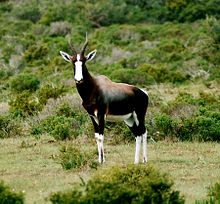
- -34.827222 20.006667 10 Agulhas National Park
- -34.0667 20.45 11 Bontebok National Park — a small but beautiful park near Swellendam
- Knysna Lake Area
- -34.021669 23.895561 12 Tsitsikamma National Park
- -33.9899 22.6088 13 Wilderness National Park
- -32.2622 22.3091 14 Karoo National Park — a sanctuary for herds of springbok, Oryx, zebra, buffalo, hartebeest, rhinoceros, eland, kudu, klipspringer, bat-eared foxes, black-backed jackal, ostriches, and lions
- -33.9667 18.425 15 Table Mountain National Park
- Tankwa Karoo National Park
- West Coast National Park — 120 km north of Cape Town , between Yzerfontein & Langebaan
Other nature reserves
- Cederberg Wilderness Area , ☏ +27 27 482-2812 . Rugged and isolated area with some fine hiking options. Permission is required and the number of hikers is limited.
- -34.4342 20.5478 16 De Hoop Nature Reserve - perfect for whale watching
- Great Winterhoek Wilderness Area .
- Knysna Elephant Park .
- -33.423056 18.084722 17 Dassen Island — 10 km west of Yzerfontein
- -33.805 18.37 18 Robben Island — in Table Bay
The Western Cape is one of the most popular tourist destinations in South Africa and offers a broad range of attractions. From the tourism hot-spot of Cape Town to the lovely scenery of the Garden Route the region offers something for everyone. So this is the right place for starting your South Africa experience.
Cape Town's international airport is the country's second largest after Johannesburg . There is also an airport in George which offers connections to most major cities in South Africa.
Spoornet [dead link] operates regular inter-city trains from Cape Town to Johannesburg , Worcester , Beaufort West , Durban , Kimberley , Bloemfontein , Pietermaritzburg and East London .
MetroRail [dead link] operates frequent commuter trains to towns and suburbs near Cape Town , such as Simon's Town , Bellville , Malmesbury , Somerset West , Stellenbosch , Strand , Worcester and Paarl .
The Western Cape is easily accessible from the rest of the country by car.
Greyhound offers a plethora of inter-city routes nation-wide.
The main bus companies offer regular services in the Western Cape (e.g. Intercape, Greyhound, Translux) as does the Baz Bus.
There is a good road network and as some places are not accessible by public transport this is a good way to travel the Cape. Car rental is available in Cape Town and in the larger towns.
There are a few hundred registered and qualified guides who know their way in Cape Town and the Western Cape. The Cape Tour Guides Association [dead link] can provide travellers with a list of all tour guides and their specialities.
- Table Mountain in Cape Town and the Cape Peninsula
- Cape Winelands around Paarl , Stellenbosch and Franschhoek
- Garden Route along the South Coast
The Western Cape offers nearly everything a traveler could want. From buzzing night-life in Cape Town and Stellenbosch to wonderful beaches and many outdoor options. So the basic itinerary should include some days in Cape Town , a visit to the Cape of Good Hope (and don`t miss the penguins at Boulders Beach ), wine tasting in Paarl or Franschhoek or Robertson , Swartland and Overberg , and a trip along the Garden Route . There are also a number of smaller National Parks with hiking trails for a day out. One of the newer 'primary unusual destinations' is Soekershof Walkabout located in Klaas Voogds along Route 62. This place consists among others of the largest permanent hedge mazes in the world; a philosopher's garden and unique succulent gardens with the oldest cactus -anno 1910- of South Africa. Visitors can earn a memento by fulfilling a quest. In the Robertson Valley are diverse hiking trails such as Arrangies Kop and Die Vrolijkheid
- Rock Climbing
- Diving the Cape Peninsula and False Bay The waters of Cape Town are relatively extensively surveyed and explored by divers. There are more dive sites than most people would visit in a lifetime's diving, some of them quite deep, and many requiring specialised equipment and the competence to use it. Also a large number of relatively easy and accessible dives, including shallow shore dives. There is also relatively good supporting infrastructure of dive shops, schools and charter boats. Conditions are variable and mostly depend on recent weather conditions, but there are sites reasonably protected from wind and waves from most directions.
- Diving in Hermanus
- Diving at Gansbaai
- Diving at Agulhas and Struisbaai
- Diving at Knysna and the Dalgleish Bank
- Diving at Plettenberg Bay
The Cape Epic is a seven-stage mountain bike race from Cape Town to Val de Ve Estate in March.
Cape Town offers everything you want. Along the coast look-out for some fish and oysters, while in the Cape Winelands head for some of the countries finest dining experiences.

This is the region to taste South Africa's best wine. Tour the cellars around Paarl , Stellenbosch and Franschhoek but check for a driver before.
The wine producing areas in the Overberg , Swartland and Robertson are gaining international recognition. The wine tasting in these areas is free. While the wines of the traditional wine-producing areas of South Africa are moved to the lower shelves of the European supermarkets, the ones from the upcoming areas can be found in top restaurants and special liquor stores and wine boutiques in Europe and North America as premium brands.
- Has custom banner
- Has map markers
- Articles with dead external links
- South Africa
- All destination articles
- Has Geo parameter
- Articles Geo different to Wikidata
- Usable regions
- Usable articles
- Region articles
- Pages with maps
Navigation menu
Western Cape, South Africa
This expedition reveals the beauty of the western cape in south africa, from dramatic coastlines to iconic table mountain..
By South African Tourism
View from Table Mountain
Table Mountain is a flat-topped mountain forming a prominent landmark overlooking the city of Cape Town in South Africa.
It is a significant tourist attraction, with many visitors using the cableway or hiking to the top. The mountain forms part of the Table Mountain National Park and is one of the 7 Wonders of Nature.
Lion's Head
Lion's Head is part of the Table Mountain range and provides a scenic backdrop to the City of Cape Town. Lion's Head is best known for its stunning views of the Mother City and Table Bay on one side, and the Atlantic shoreline on the other.
The walk to the top is worth the effort and you will be rewarded by breath-taking vistas.
Robben Island
Robben Island is both a South African National Heritage Site as well as a UNESCO World Heritage Site. The Island was, "home" to one of the world's most famous prisoners, presidents and leader, Nelson Mandela. He was imprisoned there for 18 of the 27 years he served behind bars before the fall of apartheid.
The Island, just 9 km offshore from Cape Town, was dubbed "Robben"(the Dutch word for seal) Island by early settlers, due to the seal population at the time.
Table Bay is a natural bay on the Atlantic Ocean overlooked by Cape Town and is at the northern end of the Cape Peninsula, stretching south to the Cape of Good Hope.
It was named as a result of being situated at the foot of Table Mountain.
Cape of Good Hope
The Cape of Good Hope is located within Table Mountain National Park and is on the Atlantic coast of the Cape Peninsula.
The Cape of Good Hope is home to at least 250 species of birds including one of the two mainland colonies of African penguins.
Other animals seen around the Cape include baboons, bontebok, eland, red hartebeest, and Cape mountain zebra. It is also known as a great area for whale watching.
Rocky Headlands of Cape of Good Hope
The Cape of Good Hope was famous in seafaring days as the point where a ship begins to travel more eastward than southward. It is one of the great capes of the South Atlantic Ocean.
Portuguese explorer Bartolomeu Dias, who rounded the cape in 1488, originally named the cape "Cabo das Tormentas"which means "Cape of Storms."
Lion's Head forms part of the Table Mountain range and provides a scenic backdrop to the City of Cape Town. Lion's Head is best known for its stunning views of the Mother City and Table Bay on one side, and the Atlantic shoreline on the other.
The walk up to the top is enjoyed by many hikers, daily and worth all the effort. Add a little mystery to the walk by tackling it during full moon and be rewarded with a glittering view of Cape Town by night.
Fog over Table Mountain
The cloud over Table Mountain is also known as the Tablecloth. It is formed when a south-easterly wind is directed up the mountain's slopes into colder air. The moisture then condenses to form Table Mountain covering cloud
Signal Hill
Signal Hill is a prominent landmark from which the historic noon gun is fired, and forms the "lion's body"for the adjacent Lion's Head mountaintop. The hill rewards hikers with spectacular views across Table Bay Harbour, the central city and the Atlantic Ocean.
Many family-friendly picnic spots on Signal Hill are favoured by tourists and locals all year round. Signal Hill is named for its original use: the practice of flying signal flags to communicate with nearby ships, and later
West Coast National Park
The park lies approximately 120 km north of Cape Town and is well known for its bird life and for the spring flowers which occur in the months from August to October.
Known as the Geelbek hike, one can take a walk along the boardwalk to the salt marshes in West Coast National Park.
The boardwalk allows you to have a great view of the aquatic wading birds in addition to protecting the fragile ecosystem.
The Langebaan salt marshes are unique in that no river feeds into the lagoon.
These salt marshes constitute approximately 32% of the entire salt marsh habitat in South Africa, the largest in Country.
Sunset Beach
Sunset Beach is located on the coast just north of Cape Town city center and is known for its great views of Table Mountain.
Gezicht op Kaapstad met de Tafelberg (1870 - 1893) by Wilson, George Washington Rijksmuseum
View of Table Mountain
Many visitors come to Sunset Beach for a great view of Table Mountain against the ocean. Table Mountain is a flat-topped mountain forming a prominent landmark overlooking the city of Cape Town in South Africa.
Kite Surfing
Kitesurfing is a water sport that combines snowboarding, wakeboarding, windsurfing, surfing, paragliding, skateboarding and gymnastics into one extreme sport.
A kitesurfer will use the power of the wind, with a large power kite to propel themselves across the water. This is a very popular sport in Cape Town due to the winds and hundreds of kites can be seen on the beaches in Blouberg on a windy day in the Mother City.
Jonkershoek Nature Reserve
Jonkershoek Nature Reserve is situated about 10km south-east of Stellenbosch. The mountains are very popular with hiking and mountain biking enthusiasts. During the colder months, snow can sometime be seen on the higher peaks.
Hottentots-Holland Mountains
This mountain range forms part of the Cape Fold Belt and forms a barrier between the Cape Town Metropole and the Overberg Coast line.
The mountainous trails are the only way to see the wildflowers and natural pools. The more adventurous can enjoy a canopy tour through the previously inaccessible and pristine World Heritage site.
Fynbos is a small belt of natural vegetation found in the Western Cape. The Cape Floral Kingdom is the smallest of the six world's floral kingdoms, but is the richest per unit of area.
Clifton Beach
Also known as Millionaires Row, Clifton's four fashionable beaches are home to some of the most sought-after real estate in the country and World. First Beach is popular with surfers and volleyball players while Second and Third are popular family-friendly beaches.
Fourth beach is by far the most popular and glamorous of them all and has also been awarded Blue Flag Status for it's environmental, safety and tourist standards. Clifton Beach has been voted one of the top 10 beaches in the World by the Discovery Channel.
Large falls of granite boulders divide the beaches into four quite distinct areas. The pure white granite sand gives the beach a striking look against the backdrop of the Lion's Head and the Twelve Apostles.
View of Lion's Head
There is a particularly nice of of Lion's Head from the Clifton Beaches. Lion's Head forms part of the Table Mountain range and provides a scenic backdrop to the City of Cape Town.
Lion's Head is best known for its stunning views of the Mother City and Table Bay on one side, and the Atlantic shoreline on the other. The walk up to the top is enjoyed by many hikers, daily and worth all the effort.
Atlantic Ocean
The Atlantic Ocean is the world's second largest ocean, following the Pacific Ocean.
These waters are safe to swim in but are very cold, no matter what time of the year. Very popular with the surfers.
10 Spectacular Sites You Can Explore in South Africa
South african tourism, the address of vermeer's little street discovered, rijksmuseum, game drives: a south african adventure, johannes lutma, an amsterdam artist in silver, superstars of the south african bush, the night watch, 5 things you didn't know about south africa's "hole in the wall", the love letter, active adventures in south africa, rembrandt van rijn (1606 – 1669).
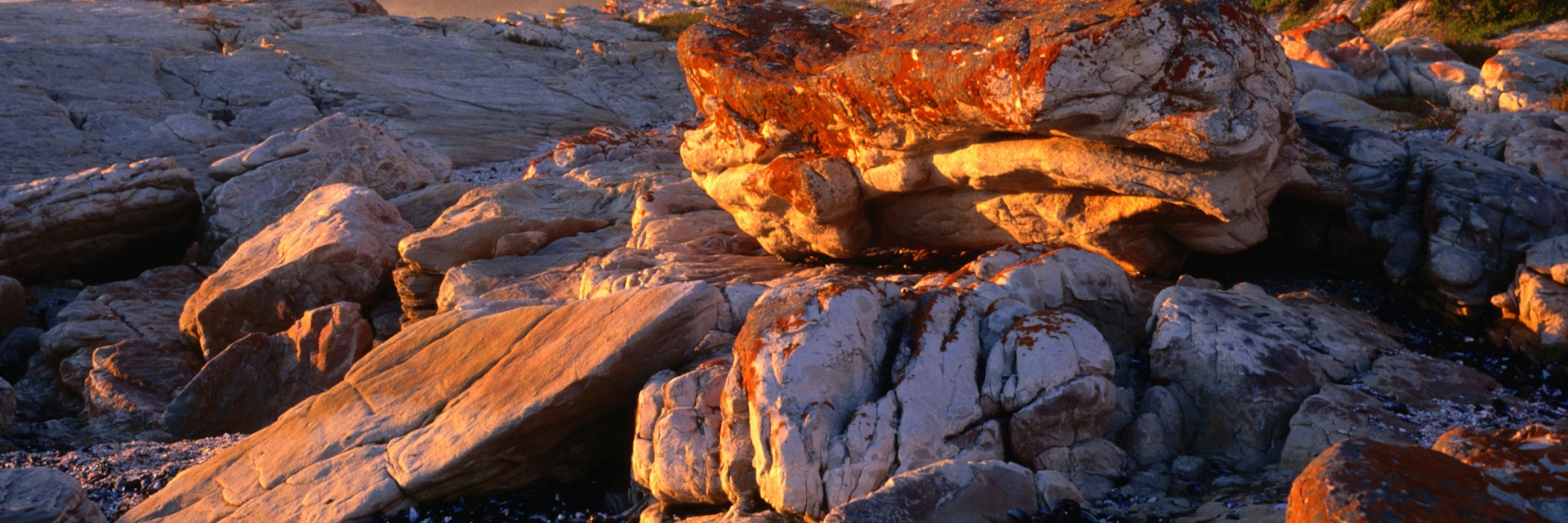
Western Cape
The splendours of the Western Cape lie not only in its world-class vineyards, stunning beaches and mountains, but also in lesser-known regions, such as the wide-open spaces of the Karoo, the many nature reserves and the wilderness areas. Make sure you get out into these wild, less-visited areas for birdwatching and wildlife adventure, as well as pure relaxation under vast skies.
Attractions
Must-see attractions.
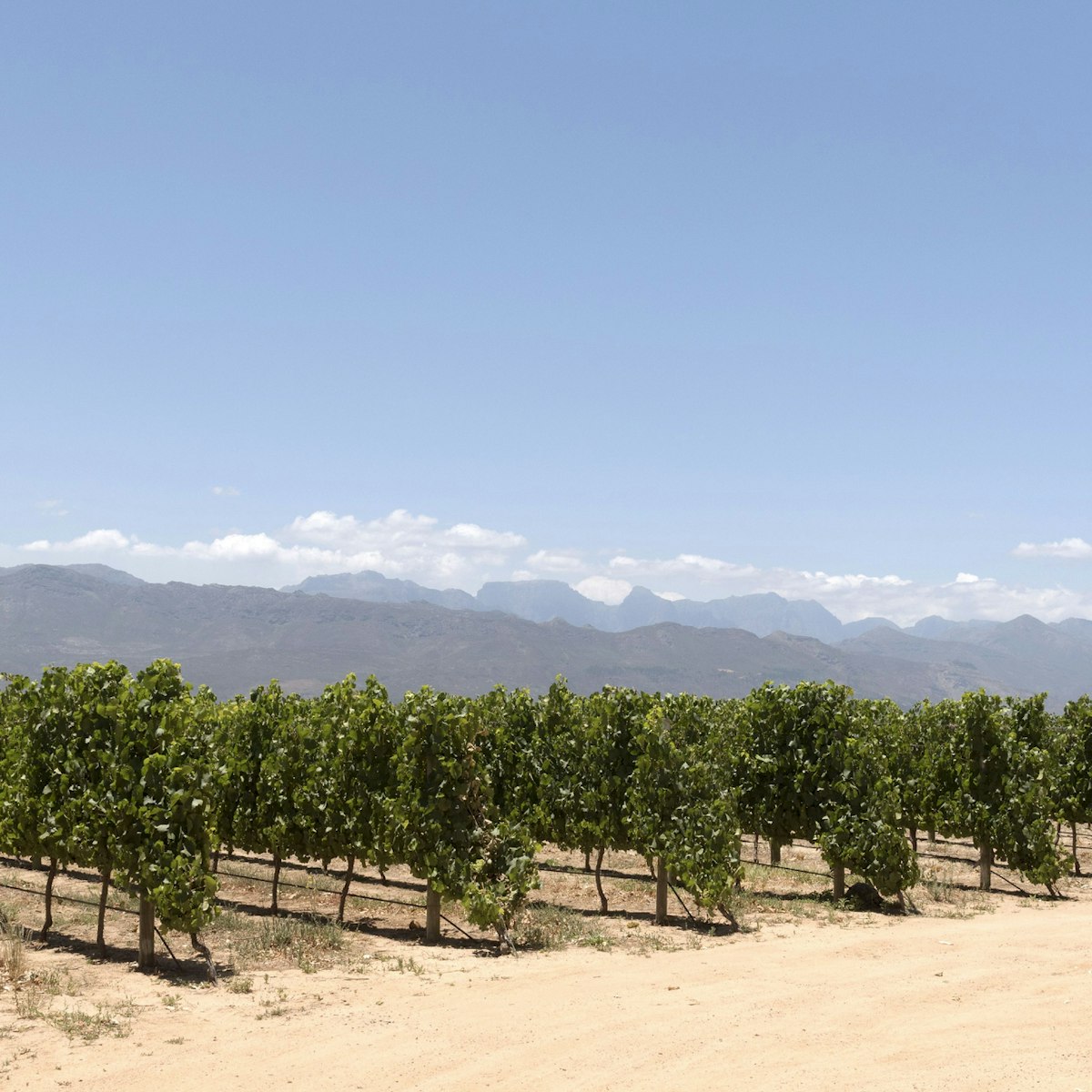
Babylonstoren
This 2.5-sq-km wine and fruit farm is on the north slope of the Simonsberg mountain between Klapmuts and Paarl. Its highlight is an 800-sq-metre, formally…
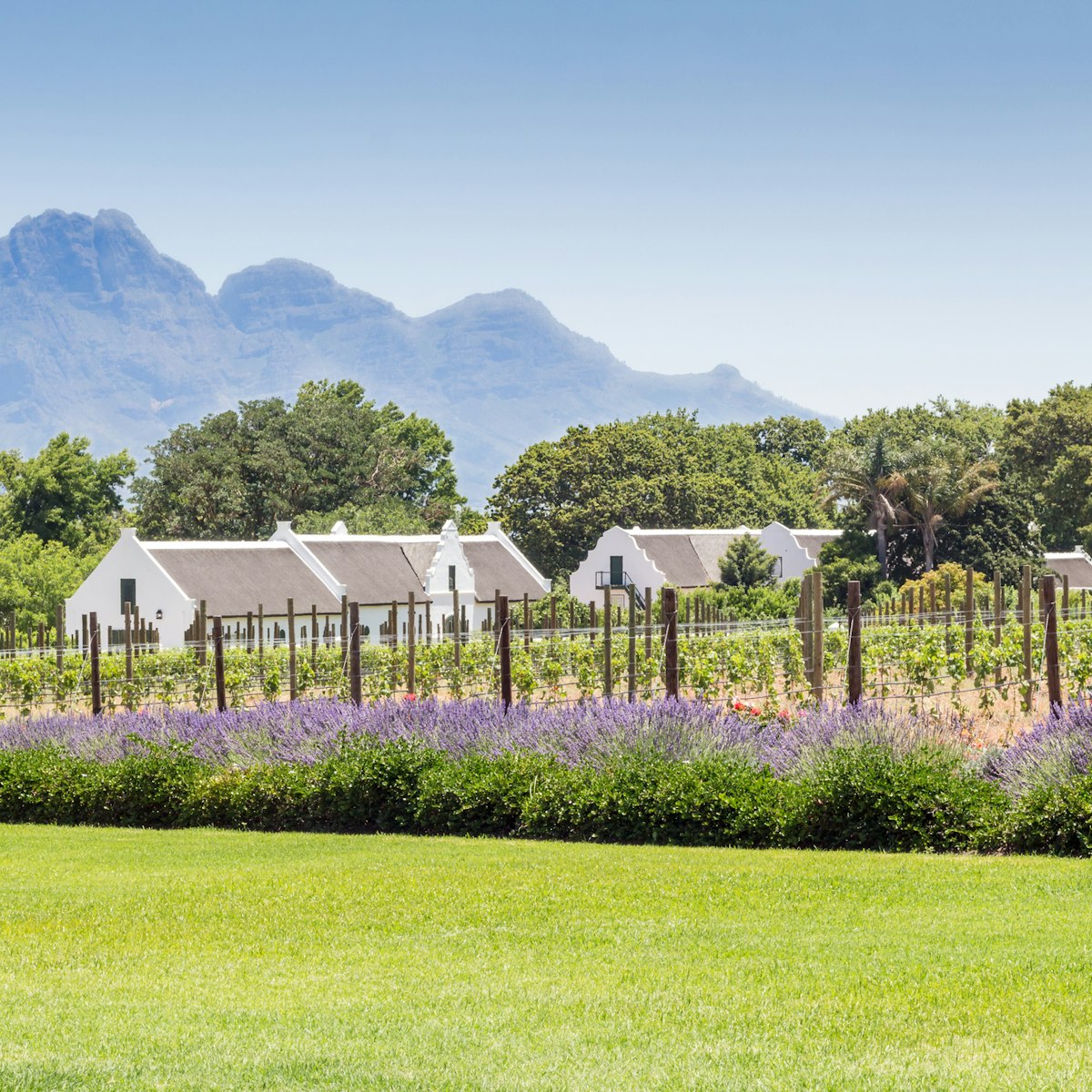
Franschhoek
There’s enough to keep you occupied for a full day at this vast estate just west of Franschhoek. As well as tastings of the superb shiraz range, wine…
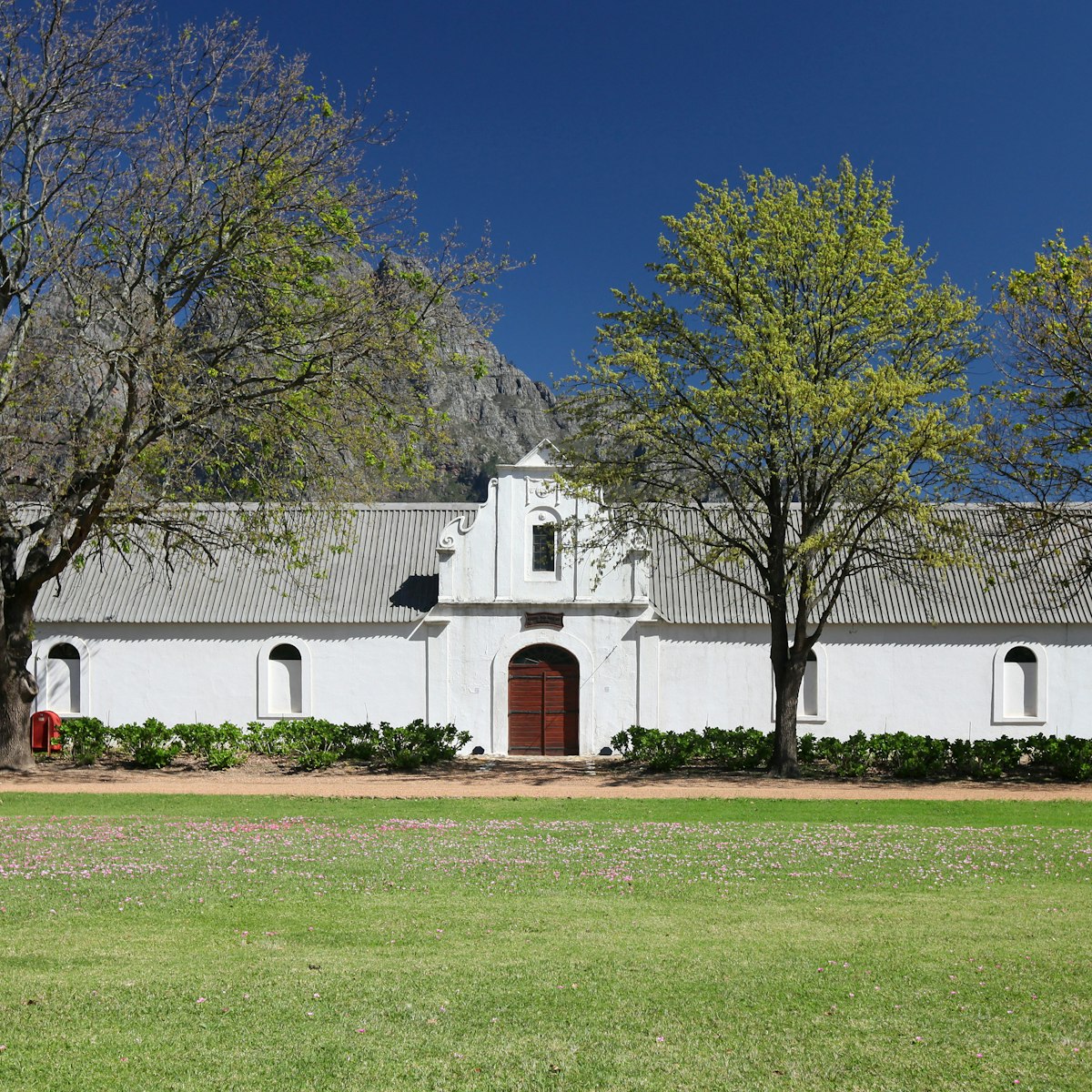
This is a quintessential Winelands estate, with lovely architecture, food and wine. Tasting options include bubbly, brandy or wine and chocolate pairing…
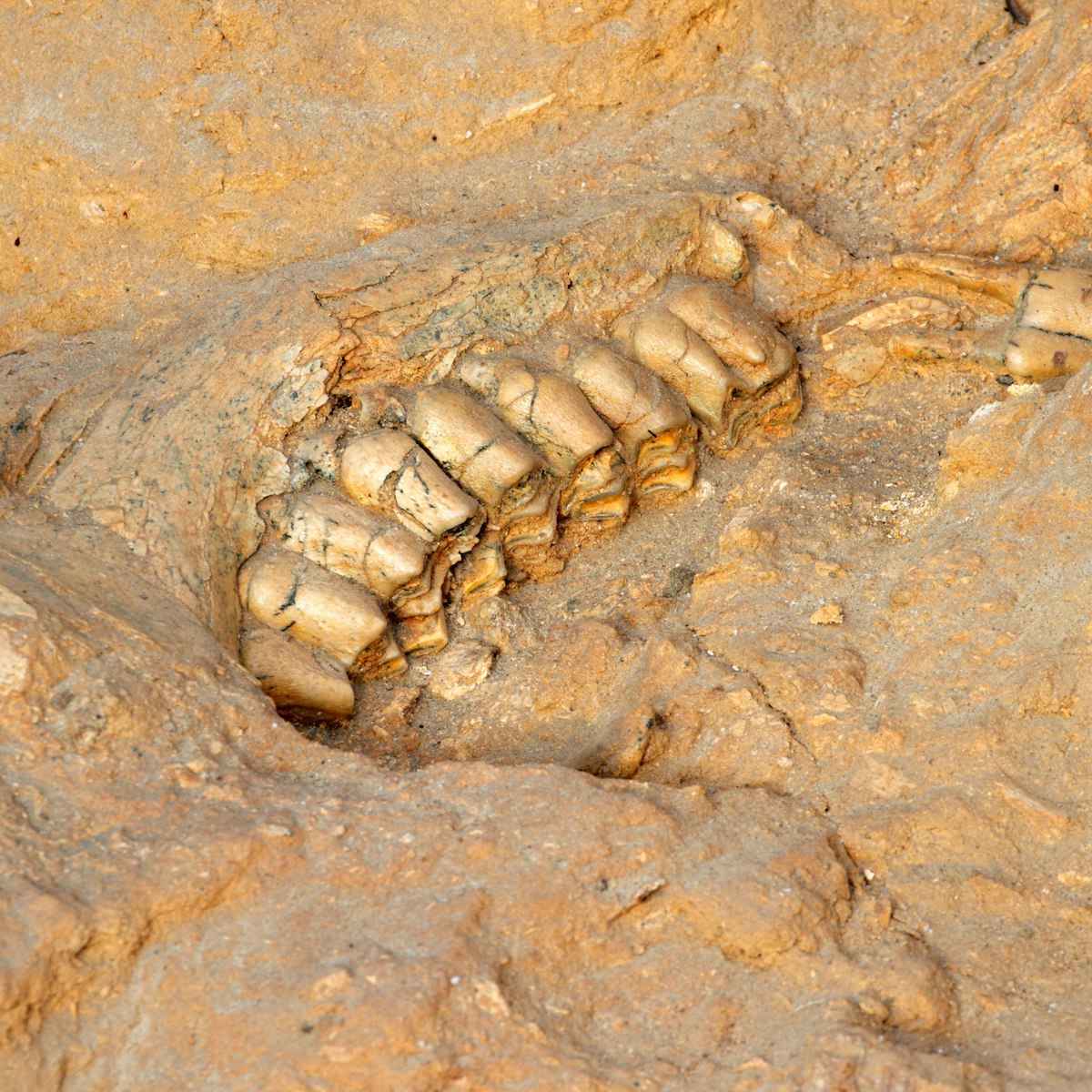
West Coast Fossil Park
West Coast & Swartland
The first bear discovered south of the Sahara, lion-size sabre-toothed cats, three-toed horses and short-necked giraffes are all on display at this…
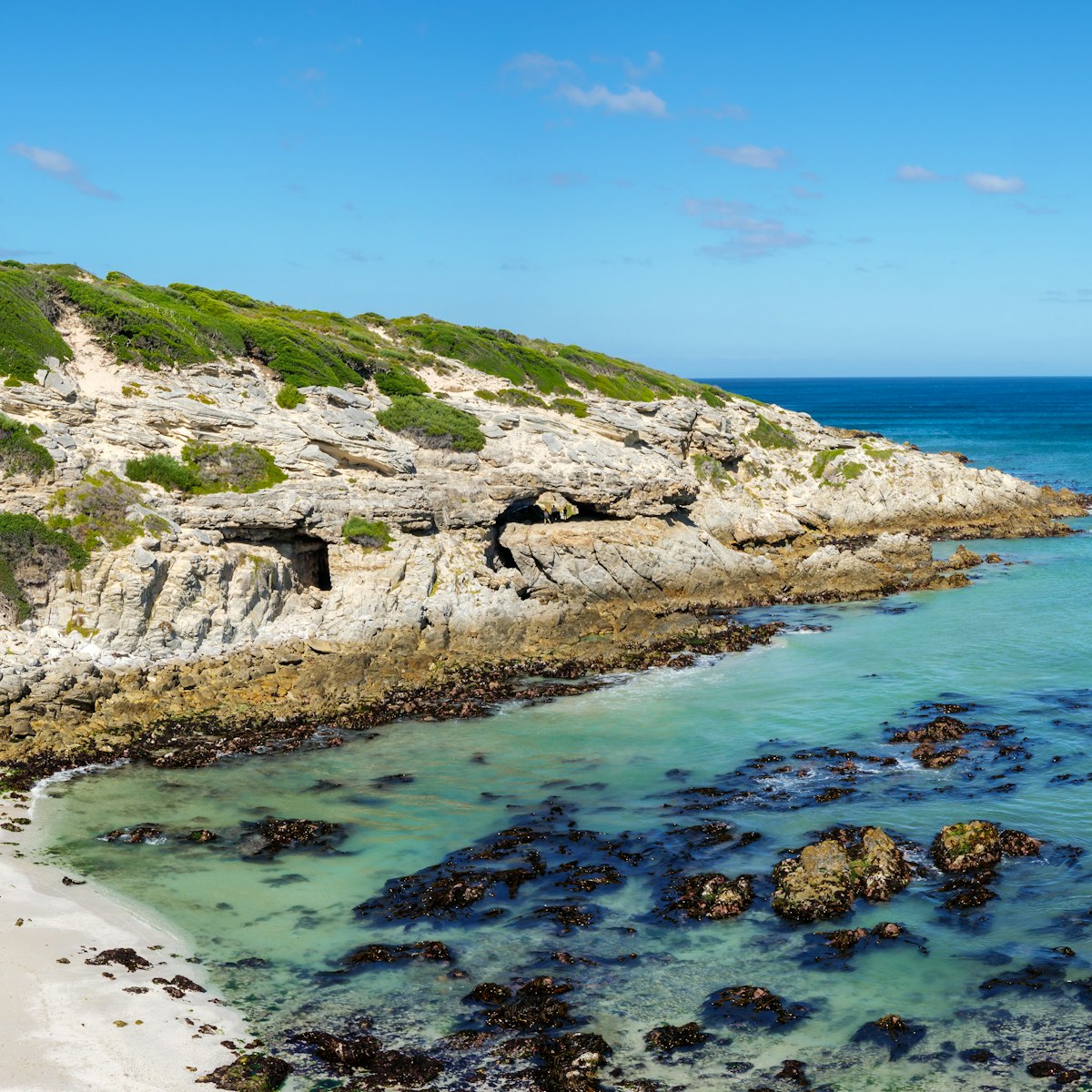
Walker Bay Nature Reserve
This coastal reserve has excellent hikes and is a prime birdwatching spot. The main attractions though, other than the ocean vistas, are the impressive…
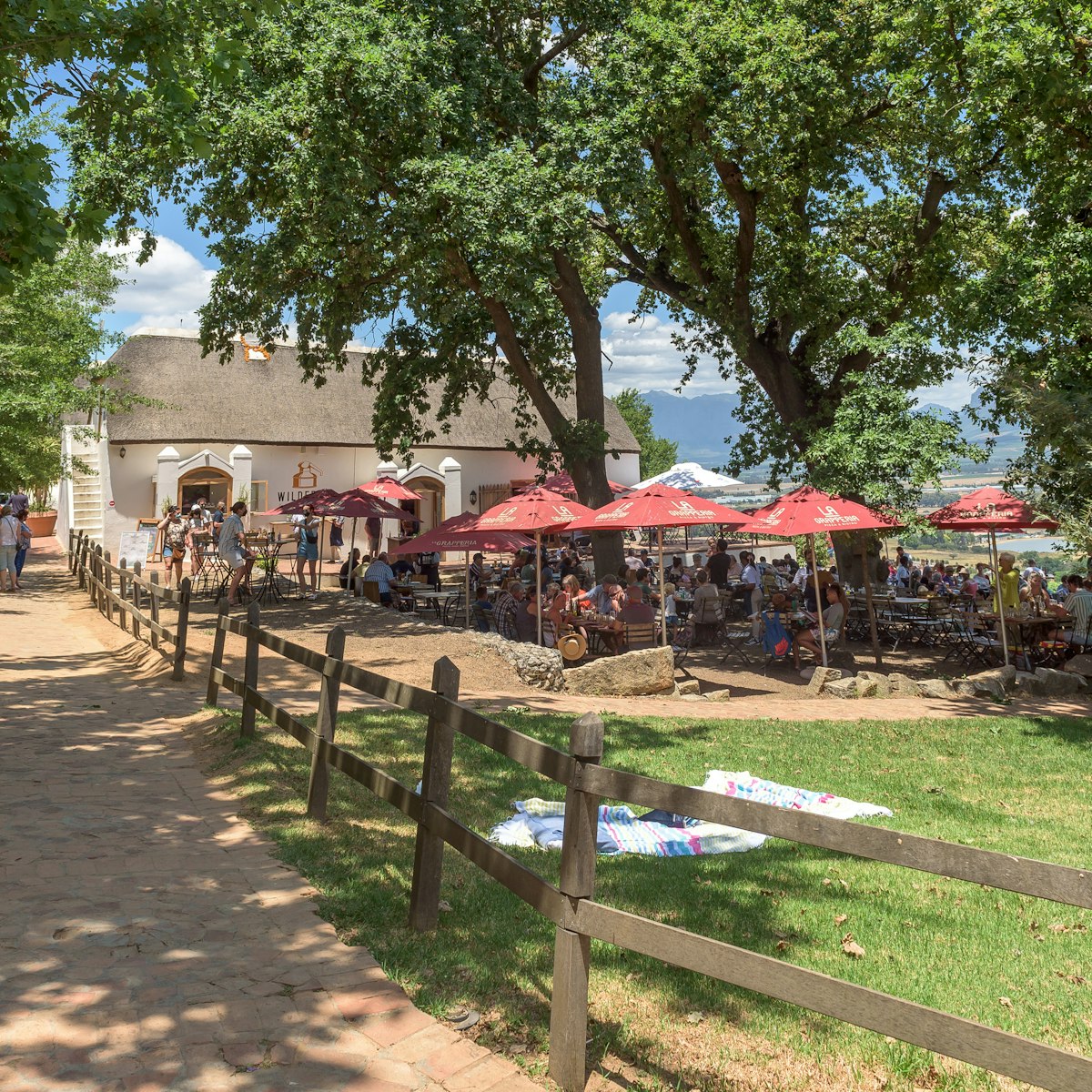
Spice Route
Spice Route is known for its complex red wines, particularly the Flagship syrah. Aside from wine there is a lot going on, including glass-blowing…
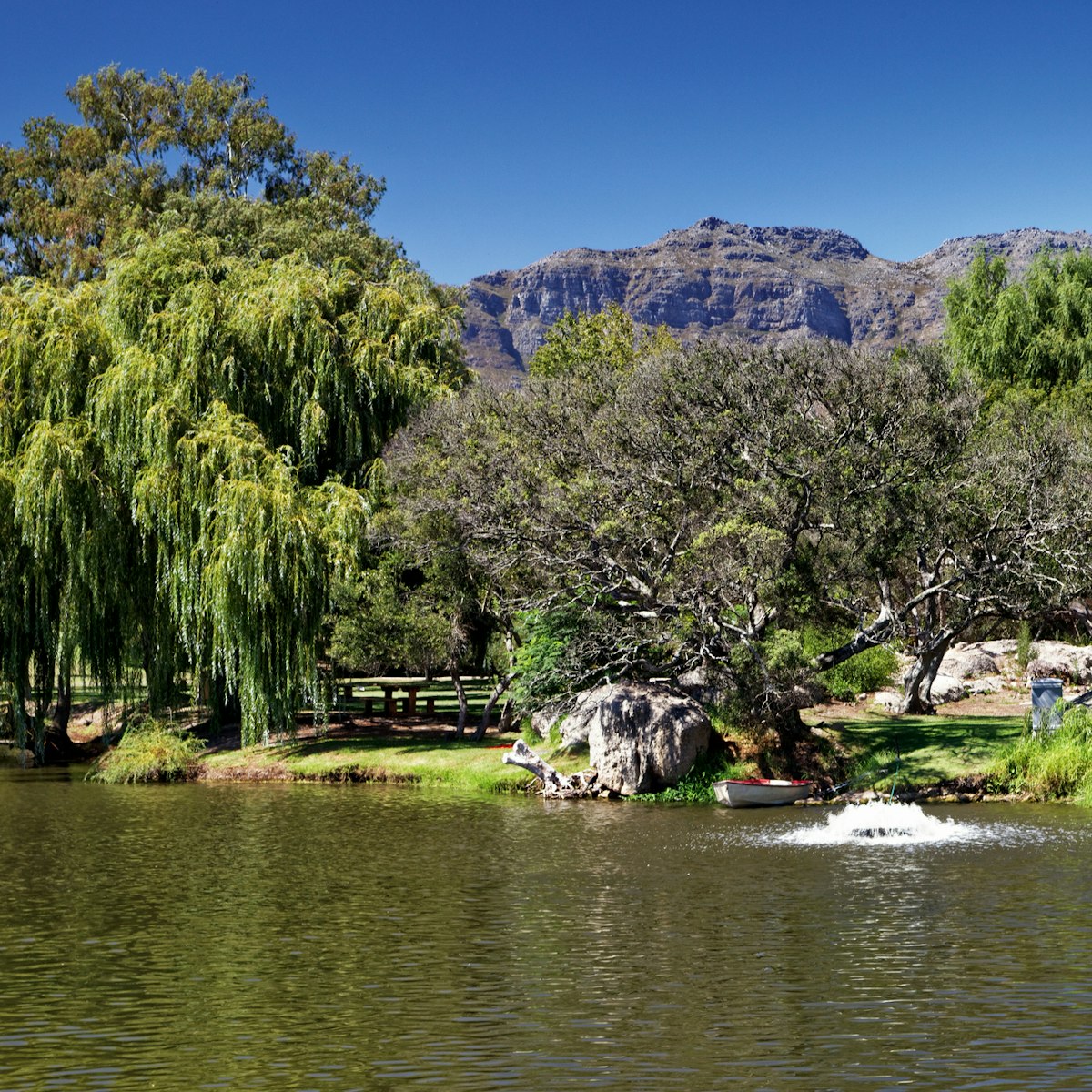
Spier Hotel and Wine Farm
Stellenbosch
Spier has some excellent shiraz, cabernet and red blends, though a visit to this vast winery is less about wine and more about the other activities…

This quiet spot in a gracious old homestead serves delectable, organically made wines. The formal tasting takes around an hour, or you can join a two-hour…
Plan with a local
Experience the real South Africa
Let a local expert craft your dream trip.
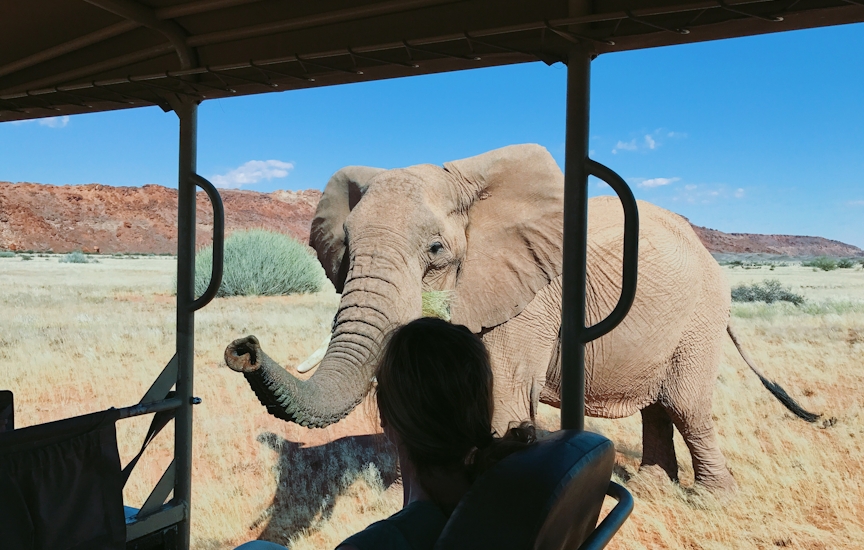
Latest stories from Western Cape
Filter by interest:
- All Interests
- Adventure Travel
- Art & Culture
- Beaches, Coasts & Islands
- Food & Drink

Nov 11, 2019 • 9 min read
Christo Brand started as Nelson Mandela’s prison guard, but he went on to forge a bond of friendship with the icon.

Jun 13, 2019 • 4 min read
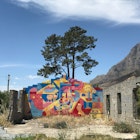
Aug 29, 2018 • 5 min read
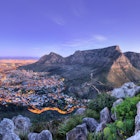
Aug 14, 2018 • 5 min read

Jul 18, 2018 • 6 min read
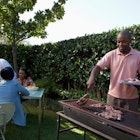
Feb 6, 2013 • 5 min read
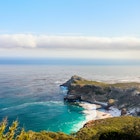
Jul 16, 2010 • 3 min read
Western Cape and beyond
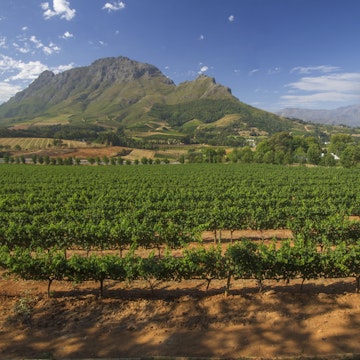
The Western Cape Travel Guide
Book your individual trip , stress-free with local travel experts
Select Month
- roughguides.com
- South Africa
- the-western-cape
- Travel guide
- Itineraries
- Local Experts
- Travel Advice
- Accommodation
Plan your tailor-made trip with a local expert
Book securely with money-back guarantee
Travel stress-free with local assistance and 24/7 support
Julian De Silva
The team put together an excellent… The team put together an excellent itinerary and trip for us to South Africa. It was exceptionally good from drivers, ...
The Western Cape is the most mountainous and arguably the most beautiful of South Africa ’s provinces. A sweep of the country’s western flank takes in wind-contoured beaches and vine-combed valleys, indigenous rock art and ancient woodland, colonial architecture and urban life. Road trips take you through spectacular mountain passes, past deserted bays and into historic villages, with tantalising glimpses of everything from whales to wildflowers along the way. Read our Western Cape guide for everything you need to know before you go.
Where to go in the Western Cape
Route 62 and little karoo, the overberg interior and whale coast, the west coast, the garden route, brief history, storms river mouth, knysna elephant park.
- Plett's beaches
Whaling and gnashing of teeth
Whale- and dolphin-watching in plettenberg bay, the knysna elephants, the winelands, tackling the winelands, wineries around stellenbosch, wineries around paarl, wineries around franschhoek, travel ideas for south africa, created by local experts.
_listing_1637090645279.jpeg)
7 days / from 4800 USD
Cape Town and Garden Route - a luxury guided tour
Cape Town and the Garden Route have it all - a fascinating culture, safaris, chocolate and wine tasting, and much more. Discover the coastal city of Cape Town and the Peninsula before heading out to the Garden Route with Knysna and Mossel Bay, where you'll experience some game drives.

15 days / from 4000 USD
The Cape Peninsula and Safaris in Kruger and Pilanesberg
Wildlife in South Africa is still truly wild, a fact that you'll be able to discover in this fascinating two weeks trip. Enjoy whale watching in Cape Town and first safaris in Aquila before heading up north: the famous Kruger and Pilanesberg national parks with all its wildlife await.
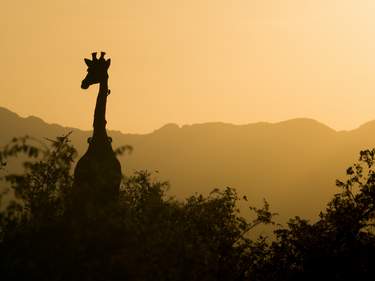
7 days / from 3000 USD
Explore the North of South Africa: Sun City and Madikwe game reserve
For those short on time, staying close to Johannesburg may make sense. On this trip, you'll arrive and depart in Johannesburg and then transfer to the theme park Lost City before continuing to Madikwe for a few days of game drives to spot plenty of wildlife.
From the vineyards of the Winelands to the remote and windswept West Coast, via the desiccated Little Karoo, the Western Cape brims with natural wonders and gastronomic riches. Here are some of the top places to visit in the Western Cape:
Stellenbosch and Winelands
The Winelands are a gastronomic destination famed for fine wine and dining in scenic surrounds. Limewashed Cape Dutch manors, housing some of the country’s best restaurants and guesthouses, are cradled in the belly of vine-combed valleys beneath mauve mountains.
The main wine routes unfurl from four towns: Stellenbosch, Paarl, Franschhoek and Somerset West. Franschhoek is the smallest, most romantic and exclusive of all the towns. A centre of culinary excellence, it is draped in a heavily cultivated Provençal character. In a region of impressive settings, it has the best – at the head of a narrow valley.
The university town of Stellenbosch, by contrast, has some attractive historical streetscapes, a couple of decent museums and cafés, and plenty of independent shops. Paarl, a pretty drive from Stellenbosch, is a workaday farming town overlooked by stunning granite rock formations. Beyond, the sprawling town of Somerset West boasts one outstanding attraction, Vergelegen, among the most impressive of the Wineland estates.
Crowned by Table Mountain , Cape Town is one of Africa’s most enticing cities. Close to the national park, the vibrant metropolis is a cultural and creative melting pot. In this extraordinary city, you can browse the world’s largest collection of contemporary African art, listen to a unique, evocatively Cape style of jazz, sip on wine in a historic Constantia estate, before partying the night away in a Long Street club. To appreciate Cape Town you need to spend time outdoors, as Capetonians do. They hike, picnic or sunbathe, often choose mountain bikes in preference to cars, and turn adventure activities into an obsession.
Pringle Bay
The coastal route along the R44 from Cape Town to Hermanus is one of the most spectacular drives in the country. The stretch is broken up by a series of mushrooming settlements, including Pringle Bay and Betty’s Bay. Pringle Bay is a small coastal village tucked away at the foot of the Hangklip in the Overberg region. The town and its surroundings are part of the Kogelberg Biosphere Reserve, a UNESCO World Heritage Site. Dolphins and whales are sometimes sighted just off the coast, while oystercatchers often nest on the sandy beach.
Garden Route
Driving the Garden Route is one of the top things to do in the Western Cape. This 200km sliver of coastal plain, dotted with empty beaches and tiny coves, stretches between Mossel Bay and Storms River Mouth. It has a legendary status as South Africa’s paradise – reflected in local names such as Garden of Eden and Wilderness. This soft, green, forested swathe is threaded by rivers, tumbling down from the mountains to the rocky shores and sandy beaches. The coast is dominated by three inlets: Mossel Bay, the closest to Cape Town; Knysna, its surrounding hills cloaked in ancient woodland; and Plettenberg Bay, home to good swimming beaches. The whole stretch is a vast adventure playground, from forest hikes to marine safaris and river tubing.
One of the most exhilarating Western Cape travel experiences is driving the mountain route from Cape Town to Port Elizabeth, which runs largely along the R62 – hence Route 62. Less known than its coastal counterpart, the Garden Route , this trip takes you through dramatic mountain passes and crosses a frontier of dorps (farming towns) and drylands. This “back garden” of the Little Karoo is in many respects more rewarding than the Garden Route, being far less developed, with stunning landscapes, quieter roads and some wonderful small towns to visit.
North of Cape Town, the remote and windswept West Coast is usually explored during the wild-flower months of August and September, when visitors converge on the West Coast National Park. In addition to its colourful botanical display, much of the park’s appeal lies in the uplifting views over the still lagoon to an olive-coloured hillside, the salty air, and the Atlantic mists vanishing in the harsh sunlight. It’s a birdwatcher’s paradise, with ostriches and thousands of migrating waders, plus tortoises galore. The West Coast’s other major draw, 200km north of Cape Town on the N7, is the Cederberg. This rocky wilderness has excellent hikes and hidden rock-art sites – the work of indigenous San people, who were virtually extinguished in the nineteenth century.
- Wine estate lunches Wine tasting is one of the most memorable things to do in the Western Cape. Eat alfresco and quaff fine vintages at the top restaurants in South Africa, while gazing out at beautiful vineyards and mountains.
- De Hoop Nature Reserve Massive dunes and edge-to-edge whales make this the most exciting coastal nature reserve in the country.
- Rooibos tea tours Visit a working rooibos farm to see where the tea is grown, and enjoy a tour and tea tasting led by a knowledgeable Western Cape guide.
- Oudrif An exceptional and remote retreat lodge on the edge of a gorge in the dry and dramatic redstone back country of the Cederberg.
- Ocean safaris Enrich your Western Cape travel by learning about whales and dolphins on an excursion around Plettenberg Bay.
- Storms River Mouth A dramatic section of coast, where hillside forests drop away to rocky coastline and the Storms River surges out of a gorge into the thundering ocean.
- Route 62 This mountainous inland route takes you via dozy villages, across spectacular passes and through semi-desert.
Garden Route A road trip along the Garden Route is one of our ultimate things to do in the Western Cape.
Be sure to incorporate the Tsitsikamma section which has it all – indigenous forest, dramatic coastline, the pumping Storms River Mouth and South Africa’s flagship hike, the Otter Trail.
- Kirstenbosch National Botanical Garden The beautiful timber-and-steel “Boomslang” walkway twists through the forest canopy at Cape Town’s Kirstenbosch National Botanical Garden, providing stunning views of Table Mountain and the Southern Suburbs.
- Explore local dorps An unsung South African pleasure is road tripping through the Karoo to elegantly decaying dorps (towns) to enjoy country hospitality, Cape Dutch architecture and off-grid relaxation. Meander slowly to the likes of Prince Albert and Nieu Bethesda.
To be fully prepared for your trip, be sure to check out our tips for visiting South Africa .
The Little Karoo is hemmed in by a gauntlet of rugged mountains and steep-sided valleys (or poorts ) that for centuries made this area virtually impassable for wheeled transport. In the nineteenth century, the British began to tackle the problem and dozens of passes were built through the Cape’s mountains. Many were engineered by the brilliant road-builder Andrew Geddes Bain and his son Thomas. In fact, whatever the Little Karoo lacks in museums and art galleries is amply compensated for by the towering drama of these Victorian masterpieces. Some of the best of these passes are listed below.
- Cogman’s Kloof Pass
Between Ashton and Montagu, a 5km route that’s at its most dramatic as it cuts through a rock face into the Montagu Valley.
- Gamkaskloof Pass
Reached from the summit of the Swartberg Pass, this is arguably the most awesome of all the passes, leading into a dramatic and lonely valley, all on gravel.
- Meiringspoort
A tarred road through a gorge in the Swartberg, which keeps crossing a light-brown river, while huge slabs of folded and zigzagging rock rise up on either side.
- Prince Alfred’s Pass
On the R339, between the N2 (just east of Knysna) and Avontuur on the R62, a dramatic dirt road twisting through mountains, past a few isolated apple farms.
- Swartberg Pass
Between Oudtshoorn and Prince Albert, an over-the-Swartberg counterpart of Meiringspoort, with 1:7 gradients on narrow untarred roads, characterized by precipitous hairpins.
East of the Winelands lies a vaguely defined region known as the Overberg (Afrikaans for “over the mountain”). Of the two main routes through the Overberg, the N2 strikes out across the interior, a four- to five-hour stretch of sheep, wheat and mountains. Just north of the N2 is Greyton, the favoured weekend retreat of Capetonians, and the starting point of the Boesmanskloof Traverse, a terrific two-day trail across the mountains into the Karoo. The real draw of the area though is the Whale Coast, based around Hermanus – the whale-watching capital of South Africa. Also along this section of coast is Cape Agulhas, the southernmost point on the continent, where rocks peter into the ocean. Nearby is the De Hoop Nature Reserve, an exciting wilderness of bleached dunes, craggy coast and more whales.
The West Coast of South Africa is remote, windswept and bordered by the cold Atlantic. For many years the black sheep of Western Cape travel tourism, it has been set upon by developers who seem all too ready to spoil the bleached, salty emptiness. The sandy soil and dunes harbour a distinctive coastal fynbos vegetation, while the coastline is almost devoid of natural inlets or safe harbours. Fierce southeasterly summer winds lash the coast and dank fogs descend in winter, though in spring wild flowers miraculously appear in the veld. The southern 200km of the region, by far the most densely populated part of the coast, has many links to Namaqualand to the north – not least the flowers. The area is well known for its watersports, hiking and birdwatching.
The Cederberg
A bold and jagged outcrop of the Western Cape fold escarpment, the Cederberg range is one of the most magical wilderness areas in the region. The jagged mountains rise with a striking presence on the eastern side of the Olifants River Valley, around 250km north of Cape Town. The high sandstone peaks and long, dry valleys manage to combine accessibility with remote harshness, offering something for hikers, campers, naturalists and rock climbers.
Top image: © Harry Beugelink/Shutterstock
The Garden Route, a slender stretch of coastal plain between Mossel Bay and Storms River Mouth, has a legendary status as South Africa’s paradise – reflected in local names such as Garden of Eden and Wilderness. This soft, green, forested swath of nearly 200km is cut by rivers from the mountains to the north, tumbling down to its southern rocky shores and sandy beaches.
The Garden Route coast is dominated by three inlets, of which the closest to Cape Town is Mossel Bay, an industrial centre of some charm, marking the official start of the Garden Route. Knysna, though younger, exudes a well-rooted urban character but has a major drawback – unlike Plettenberg Bay, its eastern neighbour, it has no beach of its own. A major draw, though, is the Knysna forest covering some of the hilly country around Knysna, the awe-inspiring remnants of once vast ancient woodlands.
Between the coastal towns are some ugly modern holiday developments, but also some wonderful empty beaches and tiny coves, such as Victoria Bay and Nature’s Valley. Best of all is the Tsitsikamma section of the Garden Route National Park, which has it all – indigenous forest, dramatic coastline, the pumping Storms River Mouth and South Africa’s most popular hike, the Otter trail.
Khoi herders who lived off the Garden Route’s natural bounty considered the area a paradise, calling it Outeniqua (“the man laden with honey”). Their Eden was quickly destroyed in the eighteenth century with the arrival of Dutch woodcutters, who had exhausted the forests around Cape Town and set about doing the same in Outeniqua, killing or dispersing the Khoi and San in the process. Birds and animals suffered too from the encroachment of Europeans. In the 1850s, the Swedish naturalist Johan Victorin shot and feasted on the species he had come to study, some of which, including the endangered narina trogon, he noted were both “beautiful and good to eat”.
Despite the dense appearance of the area, what you see today are only the remnants of one of Africa’s great forests; much of the indigenous hardwoods have been replaced by exotic pine plantations, and the only milk and honey you’ll find now is in the many shops servicing the Garden Route coastal resorts.
In contrast to the languid lagoon and long soft sands of Nature’s Valley, Storms River Mouth presents the elemental face of the Garden Route, with the dark Storms River surging through a gorge to do battle with the surf. Storms River Mouth Restcamp, sited on tended lawns, is poised between a craggy shoreline of black rocks pounded by foamy white surf and steeply raking forested cliffs, and is without a doubt the ultimate destination along the southern Cape coast. Don’t confuse this with Storms River Village just off the N2, which is nowhere near the sea. Even if your time is limited and you can’t spend the night at Storms River Mouth, it’s still worth nipping down for a meal, a walk or a swim in the summer.
Walking is the main activity at the Mouth, and at the visitors’ office at the restcamp you can get maps of short, waymarked coastal trails that leave from here. These include steep walks up the forested cliffs, where you can see 800-year-old yellowwood trees with views onto a wide stretch of ocean. Most rewarding is the three-kilometre hike west from the restcamp along the start of the Otter Trail to a fantastic waterfall pool at the base of 50m-high falls where you can swim right on the edge of the shore. Less demanding is the kilometre-long boardwalk stroll from the restaurant to the suspension bridge to see the river mouth. On your way to the bridge, don’t miss the dank strandloper (beachcomber) cave. Hunter-gatherers frequented this area between 5000 and 2000 years ago, living off seafood in wave-cut caves near the river mouth. A modest display shows an excavated midden, with clear layers of little bones and shells.
If you’re desperate to walk the Otter Trail (5 days; 42km; book through SAN Parks), which begins at Storms River, and have been told that it is full, don’t despair. A single person or a couple do stand a chance of getting in on the back of a last-minute cancellation, so it may be worth hanging out at the Mouth for a night or two.
Swimming at the Mouth is restricted to a safe and pristine little sandy bay below the restaurant, though conditions can be icy in summer if there are easterly winds and cold upwellings of deep water from the continental shelf.
Heading east from Knysna along the N2, you come to the Knysna Elephant Park. The park was established in 1994 to provide a home for abandoned, orphaned and abused young elephants, and opened to the public in 2003. The youngest of its charges are reared by park staff, who hand-feed them forty litres of baby formula a day, and sleep next to them at night. Of the activities on offer, the most popular are the roughly hour-long tours, which leave every half hour, where you’ll get the chance to touch and feed one of the pachyderms. You can also take a two-hour ride on an elephant or a guided nature walk of the same duration alongside one.
Plett's beaches
Visitors principally come to Plett for its beaches – and there's a fair choice.
- Central Beach Right at the central shore of the bay, this is where the fishing boats and seacats anchor a little out to sea. The small waves here make for calm swimming, making it an ideal family spot.
- Keurbooms Beach On the northern side of the Keurbooms Lagoon, the beach feels less developed than those on the other side and stretches for over 10km along a section of coastline where you can see groups of dolphins playing in big breakers.
- Lookout Beach One of the nicest stretches of sand for bathers, body-surfers or sun lizards, Lookout Beach has a marvellously located restaurant, from which you can often catch sight of dolphins cruising into the bay.
- Lookout Rocks To the southeast of Lookout Beach, attracts surfers to the break off a needle of rocks known as the Point.
- Robberg Beach Just south of Beacon Island, the beach stretches for roughly six soft, sandy kilometres to the Robberg Peninsula, offering excellent long beach walks. It's also accessible by road at several points along the way.
For conservationists, the monumental 1970s eyesore of the Beacon Island Hotel, on a promontory on the southern side of the Piesang River mouth, may not be such a bad thing, since previously the island was the site of a whale-processing factory established in 1806 – one of some half-dozen such plants erected along the Western Cape coast that year. Whaling continued at Plettenberg Bay until 1916. Southern right whales were the favoured species, yielding more oil and whalebone – an essential component of Victorian corsets – than any other. In the nineteenth century, a southern right would net around three times as much as a humpback caught along the Western Cape coast, leading to a rapid decline in the southern right population by the middle of the nineteenth century.
The years between the establishment and the closing of the Plettenberg Bay factory saw worldwide whaling transformed by the inventions of the Industrial Revolution. In 1852, the explosive harpoon was introduced, followed by the use of steam-powered ships five years later, and the cannon-mounted harpoon in 1868. In 1913, Plettenberg Bay was the site of one of seventeen shore-based and about a dozen floating factories between West Africa and Mozambique, which that year between them took about ten thousand whales.
Inevitably, a rapid decline in humpback populations began; by 1918, all but four of the shore-based factories had closed due to lack of prey. The remaining whalers now turned their attention to fin and blue whales. When the South African fin whale population became depleted by the mid-1960s to twenty percent of its former size, they turned to sei and sperm whales. When these populations declined, the frustrated whalers started hunting minke whales, which at 9m in length are too small to be a viable catch. In 1979 the South African government banned all activity surrounding whaling.
Elevated ocean panoramas give Plettenberg Bay outstanding vantages for watching southern right whales during their breeding season between June and October. An especially good vantage point is the area between the wreck of the Athene at the southern end of Lookout Beach and the Keurbooms River. The Robberg Peninsula is also excellent, looming protectively over this whale nursery and giving a grandstand view of the bay. Other good town viewpoints are from Beachy Head Road at Robberg Beach; Signal Hill in San Gonzales Street past the post office and police station; the Beacon Island Hotel on Beacon Island; and the deck of The Lookout restaurant on Lookout Beach.
Outside Plett, the Kranshoek viewpoint and hiking trail offers wonderful whale-watching points along the route. To get there, head for Knysna, taking the Harkerville turn-off, and continue for 7km. It's also possible to view the occasional pair (mother and calf) at Nature's Valley, 29km east of Plett on the R102, and from Storms River Mouth. For more information about whales, see the section on Whale-watching and other activities.
Traffic signs warning motorists about elephants along the N2 between Knysna and Plettenberg Bay are rather optimistic: there are few indigenous pachyderms left and, with such a large forest, sightings are rare. But such is the mystique attached to the Knysna elephants that locals tend to be a little cagey about just how few they number. By 1860, the thousands that had formerly wandered the once vast forests were down to five hundred, and by 1920 (twelve years after they were protected by law), there were only twenty animals left; the current estimate is three. Loss of habitat and consequent malnutrition, rather than full-scale hunting, seems to have been the principal cause of their decline.
The only elephants you're guaranteed to see near Knysna are at the Knysna Elephant Park or the Elephant Sanctuary, both near Plettenberg Bay.
South Africa has over a score of recognized wine routes extending to the Karoo and way into the Northern Cape, but the area known as the Winelands is restricted to the oldest wineries outside the Cape Peninsula, within a 60km radius of Cape Town. The district contains the earliest European settlements at Stellenbosch, Paarl, Franschhoek and Somerset West, each with its own wine route, on which you travel from one estate to the next to taste the wines. On the hillsides and in the valleys around these towns you’ll find a flawless blending of traditional Cape Dutch architecture with the landscape. The Winelands are best covered in a car, as half the pleasure is the drive through the countryside; without your own transport, you could take a day-trip to the Winelands with one of several Cape Town-based companies.
The most satisfying of the Winelands towns is Stellenbosch, which enjoys an easy elegance, beautiful streetscapes, a couple of decent museums and plenty of visitor facilities. One of the region’s scenic highlights is the drive along the R310 through the Helshoogte Pass between Stellenbosch and Paarl, the workaday farming town of the region. Smallest of the Winelands towns, with a rural yet sophisticated feel, Franschhoek has the most magnificent setting at the head of a narrow valley, and has established itself as the culinary capital of the country. The major draw of the sprawling town of Somerset West is Vergelegen, by far the most stunning of all the Winelands estates.
Of the several hundred estates in the Winelands, the wineries in our selection were chosen not primarily because they produce the best wine (although some do), but for general interest – beautiful architecture or scenery – or just because they are fun. When planning, bear in mind that although all the wineries offer tastings, many offer a lot more, such as restaurants, picnics and horseriding. Choose an area to explore and don't try to visit too many wineries in a day unless you want to return home in a dizzy haze. Most estates charge a fee for a wine-tasting session (anywhere up to R40) and some only have tastings at specific times; see the individual accounts for more details.
The definitive and widely available John Platter's South African Wine Guide (also available as an iPhone app) is a useful companion, which provides ratings of the produce of pretty well every winery in the country.
Stellenbosch was the first locality in the country to wake up to the marketing potential of a wine route. It launched its wine route in 1971 to huge success; today tens of thousands of visitors are drawn here annually, making this the most toured area in the Winelands. Although the region accounts for only a fraction of South Africa's land under vine, its wine route is the most extensive in the country, approaching three hundred establishments; apart from the tiny selection below (all of which produce creditable wines and are along a series of roads that radiate out from Stellenbosch), there are scores of other excellent places, which taken together would occupy months of exploration. All the wineries are clearly signposted off the main arteries.
Delaire Graff Estate
On the Helshoogte Pass, 6km east of Stellenbosch along the R310 to Franschhoek; 021 885 8160, delairewinery.co.za . The highly regarded Delaire Graff restaurant has possibly the best views in the Winelands, looking through pin oaks across the Groot Drakenstein and Simonsig mountains and down into the valley. Tasting Mon–Sat 10am–5pm & Sun 10am–4pm; summer sundowners with musical accompaniment Fri & Sat 5–9pm; three wines R30, five wines R50, six wines R60.
Jordan Vineyards
11.5km west of Stellenbosch off the R310; 021 881 3441, jordanwines.com . A pioneer among the new-wave Cape wineries, Jordan's hi-tech cellar and modern tasting room are complemented by its friendly service. The drive there is half the fun, taking you into a kloof bounded by vineyards that get a whiff of the sea from both False Bay and Table Bay, which has clearly done something for its output – it has a list of outstanding wines as long as your arm and an award-winning restaurant. Tasting daily 9.30am–4.30pm; R25 for six wines, refundable with purchases.
4km north of Stellenbosch on the R44; 021 889 5510, morgenhof.com . French-owned chateau-style complex on the slopes of the vine-covered Simonsberg, owned by Anne Cointreau-Huchon (granddaughter of the founder of Remy Martin cognac). Morgenhof has a light and airy tasting room with a bar. Delicious light lunches are served outside, topped off with ice cream on the lawns. Tasting May–Oct Mon–Fri 9am–4.30pm, Sat & Sun 10am–3pm; Nov–April Mon–Fri 9am–5pm, Sat & Sun 10am–5pm; R20 for five wines.
Neethlingshof
6.5km west of Stellenbosch on Polkadraai Rd (the R306); 021 883 8988, neethlingshof.co.za . Centred around a beautifully restored Cape Dutch manor dating back to 1814, reached down a kilometre-long avenue of stone pines, Neethlingshof's first vines were planted in 1692. There's a restaurant and for R95 you can try their "flash food" light lunch – pairings of six wines with six bite-sized takeaways (booking essential). The estate has two labels: Premium and Short Story reserve range, which consists of a Pinotage, a red blend and a flagship Noble Late Harvest white. Tasting Mon–Fri 9am–5pm, Sat & Sun 10am–4pm; R30 for six wines.
6.5km west of Stellenbosch, off the M12; 021 881 3815, overgaauw.co.za . Notable for its elegant Victorian tasting room, this pioneering estate was the first winery in the country to produce Merlots, and it's still the only one to make Sylvaner, a well-priced, easy-drinking dry white. Tasting Mon–Fri 9am–5pm, Sat 10am–3.30pm; free.
Rustenberg Wines
Rustenberg Rd, 5km north of Stellenbosch; 021 809 120, rustenberg.co.za . One of the closest estates to Stellenbosch, Rustenberg is also one of the most alluring, reached after a drive through orchards, sheep pastures and tree-lined avenues. An unassuming working farm, it has a romantic pastoral atmosphere, in contrast to its architecturally stunning, hi-tech tasting room in the former stables. Tasting Mon–Fri 9am–4.30pm, Sat 10am–1.30pm; free.
Simonsig Estate
9.5km north of Stellenbosch, off Kromme Rhee Rd, which runs between the R44 and the R304; 021 888 4900, www.simonsig.co.za . The winery has a relaxed outdoor tasting area under vine-covered pergolas, offering majestic views back to Stellenbosch of hazy stone-blue mountains and vineyards. The first estate in the country to produce a bottle-fermented bubbly some three decades back, it also produces a vast range of first-class still wines. Tasting Mon–Fri 8.30am–5pm, Sat 8.30am–4pm, Sun 11am–3pm; R25 for five wines and a bubbly.
About 8km south of Stellenbosch, off Annandale Rd, which spurs off the R44; 021 880 1683, uvamira.co.za ; map. Enchanting boutique winery that punches well above its weight, and worth visiting just for the winding drive halfway up the Helderberg. The highly original tasting room, despite being fairly recently built, gives the appearance of a gently decaying historic structure, and there are unsurpassed views from the deck across mountainside vineyards to False Bay some 50km away – on a clear day you can even see Robben Island. Tasting Mon–Fri 8am–5pm, Sat & Sun 10am–4pm; R20 for Cellar selection (four wines), R30 for Vineyard selection (two premier wines), R40 for all six wines.
There are a couple of notable wineries in Paarl itself, but most are on farms in the surrounding countryside. Boschendal, one of the most popular of these, is officially on the Franschhoek wine route, but is within easy striking distance of Paarl.
Backsberg Estate
22km south of Paarl on Simondium Rd (WR1); 021 875 5141, backsberg.co.za . Notable as the first carbon-neutral wine estate in South Africa, Backsberg produces some top-ranking red blends, and a delicious Chardonnay, in its Babylons Toren and Black Label ranges. Outdoor seating, with views of the rose garden and vineyard on the slopes of the Simonsberg, makes this busy estate a nice place to while away some time. There's also a restaurant and a maze to get lost in. Tasting Mon–Fri 8am–5pm, Sat & Sun 9.30am–4.30pm; R15 for five wines.
Suid Agter Paarl Rd, on the southern fringes of town; 021 863 2450, fairview.co.za . One of the most fun of all the Paarl estates (especially for families), with a resident population of goats who clamber up the spiral tower at the entrance, featured in the estate's emblem. A deli sells sausages and cold meats for picnics on the lawn, and you can also sample and buy the goat's, sheep's and cow's cheeses made on the estate. As far as wine tasting goes, Fairview is an innovative, family-run place, but it can get a bit hectic when the tour buses roll in. Tasting Mon–Fri 8am–5pm, Sat 9am–4pm, Sun 10am–4pm; cheese selection R15, six wines and cheese selection R25, eight wines plus cheese and olive oil selection R60.
Taillefert St; 021 807 3390, laboriewines.co.za . One of the most impressive Paarl wineries, all the more remarkable for being right in town. The beautiful manor is fronted by a rose garden, acres of close-cropped lawns, historic buildings and oak trees – all towered over by the Taal Monument. There's a truly wonderful tasting room with a balcony that jetties out over the vineyards trailing up Paarl Mountain, as well as a great restaurant with terrace seating under oaks with gobsmackingly good views of the town vineyards and mountains. Tasting Mon–Sat 9am–5pm, Sat 10am–5pm, Nov–April Sun 11am–3pm; R25.
Rhebokskloof
Signposted off the R45, 11.5km northwest of Paarl; 021 869 8386, rhebokskloof.co.za . A highly photogenic wine estate, a popular wedding venue, and a great place to bring kids, Rhebokskloof sits at the foot of sculptural granite koppies overlooking a shallow kloof that borders on the mountain nature reserve. The estate's renowned restaurant overlooks an artificial lake with swans. For those too young to legally imbibe, there's a kids' playground, pony rides and remote-controlled boats on the lake, among the extensive offerings. Horse and quad-bike trails for adults are also operated from Rhebokskloof. Tasting daily 9am–5pm; R50 for five wines.
Franschhoek's wineries are small enough and sufficiently close together to make it a breeze to visit two or three in a morning. Heading north through town from the Huguenot Monument, you'll find most of the wineries signposted off Huguenot Road and its extension, Main Road; the rest are off Excelsior Road and the Franschhoek Pass Road.
Pniel Rd, just after the junction of the R45 and R310 to Stellenbosch; 021 870 4272, boschendalwines.com . One of the world's longest-established New World wine estates, Boschendal draws busloads of tourists – 200,000 visitors a year – with its impressive Cape Dutch buildings, tree-lined avenues, restaurants and cafes, and of course its wines. Tasting takes place at the Cellar Door Tasting Centre, where you can sit indoors or sip under shady trees. Informal tasting daily 8.30am–4.30pm, R20 for five wines; conducted tasting daily Oct–March 8.30am–6pm & April–Sept 8.30am–4.30pm; R30.
Cabriére at Haute Cabriére
About 2km from town along the Franschhoek Pass Rd; 021 876 8500, cabriere.co.za . Atmospheric winery notable for its Pinot Noirs and colourful wine-maker Achim von Arnim, whose presence guarantees an eventful visit; try to catch him or, more commonly now, his son Takuan, when they demonstrate sabrage – slicing off the upper neck of a bubbly bottle with a French cavalry sabre. Tasting Mon–Fri 9am–4.30pm, Sat 10am–4pm, Sun 11am–4pm; R10 per wine or R30 for five.
Robertsvlei Rd, signposted off the R45; 021 876 2044, www.glenwoodvineyards.co.za . Small winery in a beautiful setting that produces outstanding wines year after year. Although only ten-or-so minutes' drive from the village throng, it feels surprisingly remote; vineyard and cellar tours are frequently conducted by the owner. Tasting Mon–Fri 11am–4pm plus Sept–April Sat & Sun 11am–3pm; tasting R30 (three whites and three reds).
Mont Rochelle
Dassenberg Rd; 021 876 2770, www.montrochelle.co.za . Set against the Klein Dassenberg, Mont Rochelle has one of the most stunning settings in Franschhoek and an unusual cellar in a converted nineteenth-century fruit-packing shed, edged by eaves decorated with fretwork, stained-glass windows and chandeliers. Tasting daily 10am–6pm; R25.
Solms Delta
13km north of Franschhoek along the R45; 021 874 3937, solms-delta.co.za . The pleasingly bucolic Solms Delta produces unusual and consistently outstanding wines which, on a summer's day, you can taste under ancient oaks at the edge of the vineyards. You can also order a picnic basket to enjoy on the banks of the stream that traces the estate's boundary. There's a fine museum here, too. Half the profits from the wines produced go into a trust that benefits residents of the farm and the Franschhoek Valley. Tasting Sun–Thurs 9am–5pm, Fri & Sat 9am–6pm; R10 (refunded if you buy wine).
Stony Brook Vineyards
About 4km from Franschhoek, off Excelsior Rd; 021 876 2182, stonybrook.co.za . A family-run boutique winery, with just 140,000 square metres under vine, that produces first-rate wines, including its acclaimed flagship Ghost Gum Cabernet Sauvignon, which takes its name from a magnificent old tree outside the house. Tastings are convivial affairs conducted by the owners. Mon–Fri 10am–3pm & Sat 10am–1pm; R20.
Discover more places in South Africa

- Travel Guide Morocco
- Travel Guide Namibia
- Travel Guide South Africa
- Travel Guide China
- Travel Guide India
- Travel Guide Indonesia
- Travel Guide Japan
- Travel Guide Laos
- Travel Guide Malaysia
- Travel Guide Myanmar (Burma)
- Travel Guide Nepal
- Travel Guide Philippines
- Travel Guide Singapore
- Travel Guide South Korea
- Travel Guide Sri Lanka
- Travel Guide Taiwan
- Travel Guide Thailand
- Travel Guide Australia
- Travel Guide Fiji
- Travel Guide New Zealand
- Travel Guide Belize
- Costa Rica Travel Guide
- Travel Guide Cuba
- Travel Guide Guatemala
- Travel Guide Honduras
- Travel Guide Jamaica
- Travel Guide Nicaragua
- Travel Guide Panama
- Travel Guide Puerto Rico
- Travel Guide Trinidad and Tobago
- Travel Guide Albania
- Travel Guide Austria
- Travel Guide Belgium
- Travel Guide Bosnia-Herzegovina
- Travel Guide Bulgaria
- Travel Guide Cyprus
- Travel Guide Czechia (Czech Republic)
- Travel Guide Denmark
- Travel Guide England
- Travel Guide Estonia
- Travel Guide Finland
- Travel Guide France
- Travel Guide Germany
- Travel Guide Greece
- Travel Guide Hungary
- Iceland Travel Guide
The Rough Guides to South Africa and related travel guides
In-depth, easy-to-use travel guides filled with expert advice.

Find even more inspiration here

Planning your own trip? Prepare for your trip
Use Rough Guides' trusted partners for great rates
written by Rough Guides Editors
updated 20.05.2024
Ready to travel and discover South Africa?
Get support from our local experts for stress-free planning & worry-free travels.
- Where to stay
- Travel advice
- Useful Links
- Members' Portal
Vision, Mission and Values
Political Composition
- Promotion of Access to Information
Organisational Structure
- Member Profiles
- Member Constituencies
Code of Conduct
- Register of Interests
Legislative Process
Papers of the House
- Questions and Replies
- SONA and SOPA SPEECHES
Standing Rules
- Ad-hoc Committee on Western Cape Powers Bill
Committee Documents
Contact Committees
Legislation
- Bill Tracking
NCOP Legislation
- Educational
- Hansard Volumes
- Provincial Gazette
- Dept Annual Reports
- INTERPARLIAMENTARY ENGAGEMENTS
- Glossary of Terms
Search form
Public Education
Education Workshops
Public Participation
Educational Material
How to Visit
Contact Form
Media alerts and releases
How to do business with us
Directory of Staff
Administrator Login
News Archives
You are here.

The emblem represents a move away from the past and the adoption of a new identity with the emphasis on the people of the Western Cape.
It depicts people at the centre of parliamentary business, with the three figures representing not only the vibrant diversity of the Western Cape but also capturing the colours of the national flag, clearly signalling the message that the Western Cape is part of South Africa and we are all proudly South African.
The three figures represent the three arms of government (the judiciary, the legislature, and the executive), though independent, they are interlinked and intertwined. The three figures are standing at the top of a flight of steps, thus communicating the centrality and elevation of the people we serve. The steps leading to the entrance are reminiscent of the seven steps in the Bo-Kaap but also represent the steps to a parliament that is open to the electorate.
The arches at the top of the flight of steps symbolise the arches at the entrance to the Wale Street precinct and the open doors reflect a parliament that is open and accessible to all. Behind the figures a ray of sunlight reflects the hope and aspirations of the people. The wording around the figures recognises the diversity of the Western Cape and in particular the three official languages of the province - Afrikaans, isiXhosa and English. The emblem is surrounded by a black seal representing the official mark of the WCPP.
The Coat of Arms
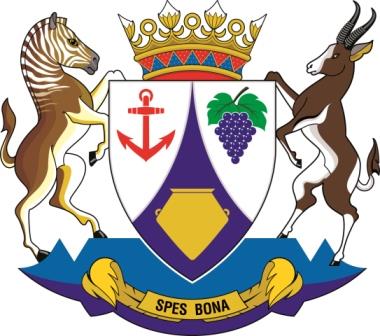
The coat of arms of the Western Cape symbolises some of the most important elements of the province’s history, industry and natural resources. The anchor in the shield symbolises hope, stability, and faith. It also alludes to the province’s maritime history and marine riches. The bunch of grapes alludes to the importance of agriculture in the broader sense, and in a narrower context to the province as an important wine-producing region.
The clay pot on the base of the shield symbolises the manufacturing sector, and incorporates an artefact created by the early inhabitants of the province, the Khoikhoi. A Quagga and Bontebok support the shield. The former is extinct, but is currently part of a specialised breeding programme, which hopes to produce a close replica. The latter was saved from the brink of extinction and is unique to the province. These two animals stand on a base in the form of stylised representation of Table Mountain, the Western Cape’s most recognised natural feature.
On the upper rim of the shield rests a distinctive coronet comprising a beaded head-ring, heightened with alternating protea flower head and rings. Beneath the base is a ribbon in the form of ostrich feathers, inscribed with the motto Spes Bona meaning Good Hope.

The mace, a symbol used in many Westminster-style parliaments across the world, was originally a club-like weapon made of iron or steel. Presently, it is used as a ceremonial staff-of-office and as a symbol of the Speaker's authority and the right of Members of Parliament to exercise freedom of speech.
At the beginning of each sitting of the House, the mace is placed on a table in front of the Speaker and only removed when the House adjourns.
The arrangement of symbols on the mace is similar to that on the coat of arms. At the top of the staff is coronet of proteas and rings. The crown sits on a Khoikhoi pot, decorated with anchors and bunches of grapes. Just above and below the pot is traditional San beadwork. At the bottom of the Stinkwood shaft is a stylised protea. The top and bottom of the mace consists of nine-carat white and yellow gold.
National Council of Provinces
Privacy Notice
House at Work
Sona and Sopa Speeches
Rulings Index
Publications
Tel: +27 21 487 1600
Address: 7 Wale Street
- Follows Us On

Search form
New western cape government brand.
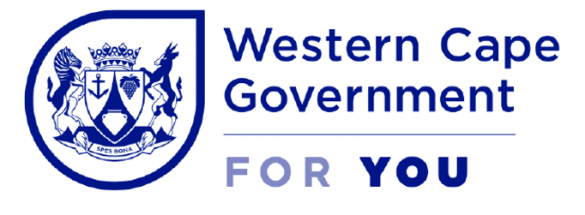
23 November 2021
The Western Cape Government has recently launched its new “brand”.
The previous WCG brand and logo was premised on delivering “opportunity” and requesting reciprocal “responsibility” from the citizen – hence the slogan ‘Better Together’.
Given the new Strategic Priorities, and the onset of Covid-19 and the subsequent hardships many face, the new brand seeks to make sure that everything we do and say generates a sense of OPTIMISM and acknowledges and respects the WORTH of all individuals.
The generation of these two feelings, consistently and authentically, is our new brand.
- A sense of OPTIMISM (because we get things done)
- Acknowledges and respects the WORTH of all individuals (because you matter)
- The “For You” communicates that we are citizen-centric and embrace doing everything we can for the people we serve.
So ask yourself: Do I generate a sense of OPTIMISM and WORTH, consistently in my daily interactions with my fellow colleagues and learners in my school?
As an education department our children especially need to know their worth and they need hope. This is so important. Let us all embrace this brand through a values-driven approach to our daily duties.
The collateral, including email signature, templates and theme for 2022 will be uploaded next week on the WCED branding page for downloading. You can find it here: https://wcedonline.westerncape.gov.za/wced-branding
- Media Releases
South Africa: Western Cape Government on hospitality and tourism industries 20 Jul 2022
The Western Cape’s hospitality, tourism and events sectors are among the industries leading the charge in the province’s post-Covid-19 economic recovery.
This is shown by recent accolades awarded to Cape Town International Airport, some of Cape Town’s best restaurants, and the town of Franschhoek.
From our restaurants to our picturesque towns, it is clear that Cape Town and the province offer both international visitors and residents an array of top-class experiences.
The Western Cape Government believes the hospitality and tourism sectors are important aspects of getting the provincial economy back on its feet.
The latest accolade was presented to Cape Town’s Fyn restaurant, which cooked itself to 37th place in the auspicious “World’s 50 Best Restaurants” list – an internationally recognised competition showcasing exceptional eating spots across the globe.
The Western Cape’s “winning streak” does not end there. The very same list also featured two more restaurants in its top 100. The renowned La Colombe, also in Cape Town, and Paternoster’s Wolfgat restaurants continue to rack up awards, having joined Fyn on the same prestigious list.
International visitors are once again discovering the many attractions on offer in the Cape. In April 2022 arrivals through Cape Town International Airport soared to 98% of pre-pandemic levels. Recent data from Statistic South Africa also showed other key source markets such as Germany and the Netherlands made an impressive recovery in April, compared with the same period in 2019.
Cape Town International Airport also continues to impress. Last month, it was once again ranked the best in Africa for the 7th consecutive year, in the 2022 Skytrax World Airport Awards.
While the Mother City has a lot to offer tourists, hitting the road and exploring the rest of the Western Cape is also worthwhile. Take Franschhoek, for example. The Western Cape Government is very proud of the town, which recently made it onto Time Magazine’s list of “World’s Greatest Places” for 2022.
Our events sector is another post-Covid-19 recovery priority. The recent South Africa and Wales rugby Test decider played at Cape Town’s DHL Stadium saw nearly 51 000 people pack the venue to cheer the Springboks’ to victory. The WCG is not just excited by the opportunity the match offered as a springboard for the return of the events industry, now that all Covid-19 restrictions have been lifted, but the Provincial Government is proud of the Springbok squad too.
These impressive accolades put the spotlight on the Western Cape’s world-class hospitality and tourism sectors, serving as drawcards for tourists.
Our blues skies, a temperate climate and some of the best restaurants in the world add to the many attractions on offer to international and domestic visitors.
Western Cape Finance and Economic Opportunities Minister, Mireille Wenger, enthused: “The province has so much to offer international, domestic, and local visitors. No matter what you enjoy doing, from hiking to dining, from the outdoors to wonderful cultural experiences, we really do have it all.”
The Minister added: “The slew of recent accolades confirms this, and we are very proud that many of the stunning spots in the province are being recognised”.
Distributed by APO Group on behalf of Republic Of South Africa: Western Cape Provincial Government.

Elsewhere on Ventures

- Bravura Holdings unveils Zimbabwe’s first world-class lithium upgrade facility at Victoria Falls Mining Indaba
- Kaizen: A Rational Approach to Investing
- Mastering commodities trading in Africa: Your ultimate guide to navigating the market
- Finbok Unveiled Mastering Currency Trading

- How does Ghana plan to become Africa’s first blockchain-powered government?
- Resolving disputes in the gas sector – Is arbitration a way to go?
- WORLD VAPE DAY: Global Alignment On Health Policy Is Necessary To Make a Smokeless Nigeria a Reality
- Grassroots Activist Hamzat Lawal Shares Insights on Building Resilient Non-Profit Organisations in Africa

- The Aig-Imoukhuede Foundation celebrates graduation of third cohort of public servants from AIG Public Leaders Program
- Here’s why some businesses thrive despite economic inflation
- Ibukun Awosika elongates impact trail at 3rd International Women Leadership Conference
- My pivot journal: Sandra Ubochi went from sales rep to DeFi expertise

- The future of healthcare on display: Day 1 of Medlab West Africa wraps up
- Nigerian teen innovator, Ojo Wisdom, creates a solar laptop power bank
- Celebrating the Success of the 5th Edition Connected Africa Summit – Africa’s Premier Telecom Summit

15 Top-Rated Tourist Attractions in the Western Cape
Written by Karen Hastings , Carri Wilbanks and Becca Blond Updated Apr 25, 2022 We may earn a commission from affiliate links ( )
Drenched in natural beauty, the Western Cape Province arcs enticingly around its capital, Cape Town , which sits in one of the world's most seductive settings, between mountains and the sea. This incredibly photogenic province claims two of South Africa's iconic landmarks: Table Mountain and Cape Point, as well as the southernmost point of the African continent, Cape Agulhas , where the mighty Indian and Atlantic Oceans meet.
Along the coast, whales swim in the cool, clear waters; penguins waddle along white-sand beaches; and sightseers can hike trails sliced into rugged cliffs above the pounding sea.
From Cape Town, the hinterland undulates to farming country and charming Cape Dutch towns like Stellenbosch , Swellendam , and the ostrich capital of Oudtshoorn. Farther inland, the stark semi-desert landscapes of the Great Karoo and surrounding parks provide the perfect counterpoint to the lush coast. Here, visitors can photograph contorted russet-hued rock formations; seas of colorful wildflowers; and seemingly endless fields of fynbos, the prolific native scrub.
Travelers can also explore part of the Western Cape's coastline on the Garden Route, which is one of the most famous scenic drives in the country.
Discover the best places to visit in this diverse region with our list of the top tourist attractions in the Western Cape.
1. Table Mountain, Cape Town
2. robberg nature reserve, plettenberg bay, 3. boulders penguin colony, 4. cape point, 5. karoo national park, 6. stellenbosch, 7. the wildflowers and birds of west coast national park, 8. knysna heads, the garden route, 9. hermanus: whale watching and water sports, 10. cederberg wilderness area, 11. cape agulhas, 12. matjiesfontein, 13. oudtshoorn, 14. swellendam and bontebok national park, 15. gondwana game reserve, map of tourist attractions in the western cape.
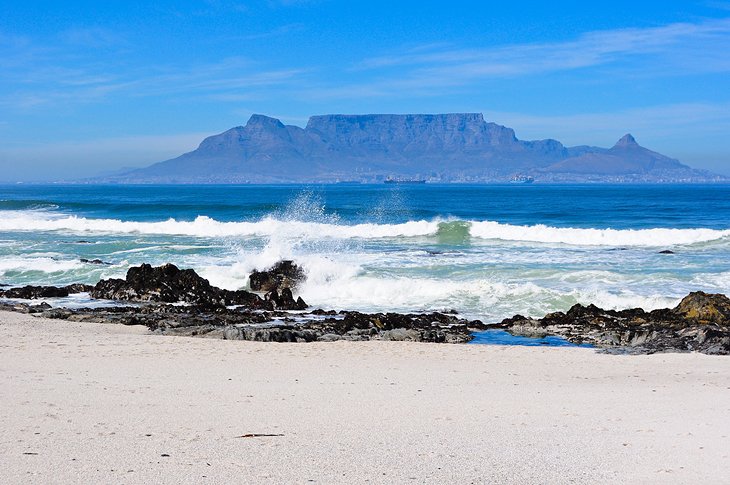
No self respecting tourist should leave Cape Town without snapping a picture of Table Mountain, one of the most photographed landmarks in South Africa . This iconic flat-topped landmark towers 1,087 meters above the city center and beckons both locals and visitors to perch atop its panoramic plateau and breathe in the splendor of this ravishing city.
Composed of thick beds of sandstone and slate, the mountain is the crown jewel of Table Mountain National Park, which protects an incredible diversity of plants and animals. The best time to summit Table Mountain is when the peak is clear from the layer of clouds, called the "tablecloth," which frequently forms a fluffy duvet over the mountain's peak. Choose the right timing, and lucky visitors can soak up spectacular views of Cape Town and the entire Cape Peninsula from the top.
The easiest way to ascend this famous landmark is to hop aboard the revolving cableway, which runs daily-except in high winds. Once on top, sightseers can explore three short nature walks or relax on the deck at the café here and gape at the views. Energetic climbers who wish to ascend the mountain on foot can choose between more than 350 routes catering to different abilities. The climb can take anywhere from two to four hours.
To photograph the mountain itself, rather than the view from the peak, hike or drive up the adjacent Signal Hill or Lion's Head -both offer fantastic vantage points. In a gorgeous setting on the eastern slopes of Table Mountain, Kirstenbosch Botanical Gardens belongs to the Cape Floristic Region UNESCO World Heritage site and is another must-see while in Cape Town.
- Read More: Best Attractions & Places to Visit in Cape Town
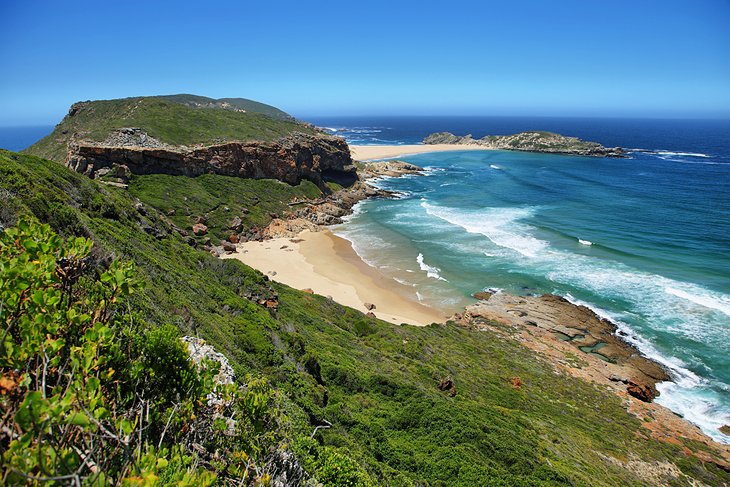
About eight kilometers from the popular coastal town of Plettenberg Bay, the Robberg Nature Reserve is one of the top attractions on the famous Garden Route , a roughly 200-kilometer scenic drive stretching from Mossel Bay, in the Western Cape, to the Storms River, on the Eastern Cape . This magnificent reserve resides on a four-kilometer-long peninsula at the foot of the Mountain of the Seal, where some of the rocks date back through millennia.
Hikers will be in heaven here. Breathtaking trails of varying difficulty thread throughout the peninsula, but the queen of them all is the 10-kilometer hike around the point, skirting rugged sea cliffs and passing beautiful beaches. Birdlife is prolific-especially water birds, some of which breed here. Seals bask on the beach and splash in the sea, and in season, whales and dolphins swim the waters along the coast. Keep a look out for great white sharks as well.
The visitor center at the parking lot dispenses information on the local flora and fauna.
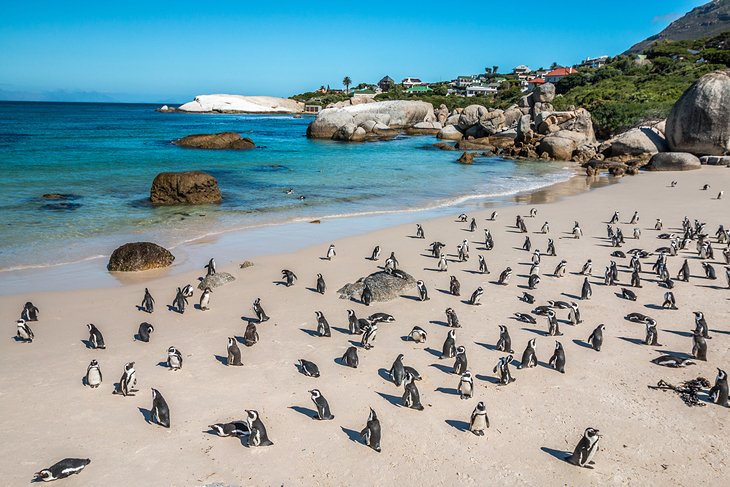
A must-see for wildlife lovers is the Boulders Penguin Colony with three beautiful beaches, where these charismatic creatures waddle along the clean white sands. In Simon's Town , about an hour's drive from Cape Town, the beaches are home to a breeding colony of more than 2,000 endangered African Penguins.
As well as viewing the penguins up close, visitors can paddle in the clear, calm waters. Huge granite boulders shelter the bay from winds and currents making this a fabulous swimming spot for children. A short walk from here, Foxy Beach has a boardwalk that leads past the prime penguin-viewing sites. The beaches are part of the Table Mountain National Park Marine Protected Area, and the park charges a daily conservation fee.
Official site: http://www.sanparks.org/parks/table_mountain/tourism/attractions.php
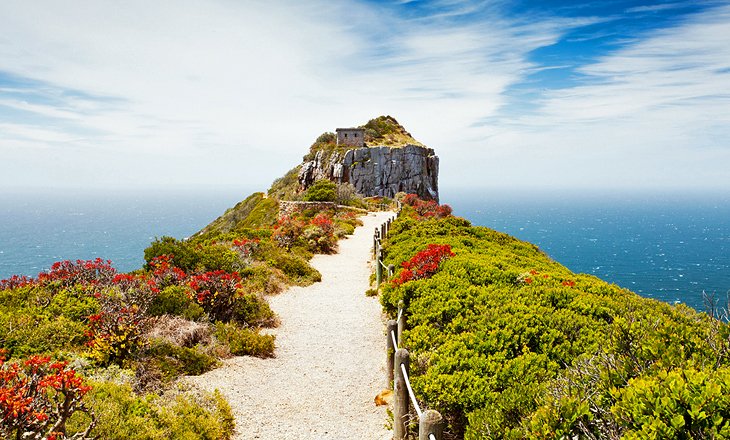
Cape Point, about 60 kilometers from Cape Town, is one of the most popular day trips from the city. Not only is this the southwestern-most point of the African continent, it's also part of the Cape Floral Region, a UNESCO World Heritage Site with one of the richest areas of flora on the planet. The birdlife is also prolific with more than 250 species.
The view from the Cape Point Lighthouse is spectacular-visitors can climb up the stairs, or better still, take the Flying Dutchman funicular to the top. Other highlights here include exploring the nature trails, whale watching, and wildlife spotting-look for Cape zebra and eland, and watch out for the troops of cheeky baboons.
Traveling to this far-flung strip of land can be just as scenic as the site itself. The drive along the Cape Peninsula passes through pretty beach towns and prime penguin viewing on the beautiful beaches at Boulders Bay . On the return trip, travelers can wind along sheer sea cliffs on Chapman's Peak Drive and soak up amazing sunset views along the way.
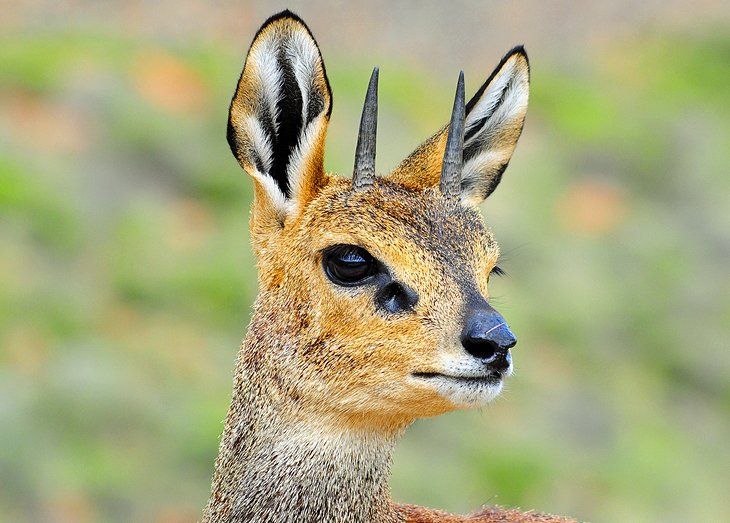
Just outside the town of Beaufort West , Karoo National Park is a land of haunting beauty, where the flattened peaks of the Nuweveld Mountains rise above vast, red-earthed semi-desert landscapes dappled with greens and golds. Established in 1979, the park forms part of the Great Karoo , South Africa's largest ecosystem, and is an important fossil site. It protects many endemic species including buffalo and rhino, as well as species that have been reintroduced such as Cape mountain zebras, springboks, kudus, lions, and brown hyenas. Oryx and klipspringer are a common sight here, and the bat-eared fox is perfectly suited to the arid conditions.
Birders are also rewarded with the chance to spot one of the breeding pairs of the rare Verreaux's Eagle, as well as a startling diversity of smaller species. Park highlights include Klipspringer Pass, the breathtaking panorama from Rooivalle View Point, and the Fossil Trail . To learn fascinating details about the park, stop by the Ou Schuur Interpretive Centre .
Karoo National Park is a popular stopover on the drive from Cape Town to Johannesburg and accommodates visitors in comfortable Cape-Dutch-style cottages. Note that 4WD vehicles are required for some of the tracks.
Beaufort West, the gateway to the Karoo, is the birthplace of the famous heart surgeon Christiaan Barnard. Many prizes and distinctions won by Barnard are displayed in the town's museum, which stands near the little parsonage where he lived as a child.
Official site: http://www.sanparks.org/parks/karoo/
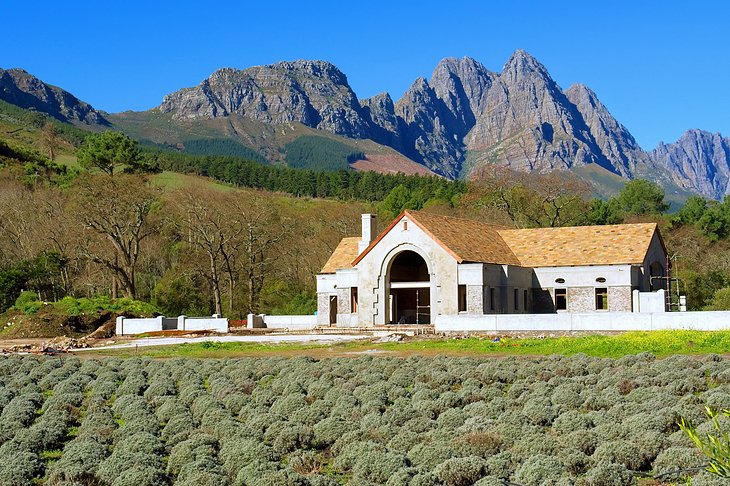
Elegant Stellenbosch, the second oldest European settlement on the Cape, offers day-trippers from Cape Town a peaceful change of pace from the city buzz. Vine-cloaked fields, old oaks, and cobbled streets greet visitors, and charming Cape Dutch-style buildings lend the air of a bygone era.
Stellenbosch is also renowned for its fertile soils and fresh produce, which visitors can sample at a range of gourmet restaurants and cafés. Stellenbosch University is the oldest and most celebrated university in South Africa, and the students imbue the town with a bubbly vibe. Stop by the University Botanic Gardens to see indigenous succulents, orchids, and cycads, as well as the welwitschias, which are common in the deserts of Namibia.
Also worthwhile is the Village Museum a group of four houses dating from 1709 to 1850, which have been carefully restored and furnished in the original style, and the Rupert Museum focusing on South African art. Not far from town, the Jonkershoek Nature Reserve has fantastic hiking and biking trails. While in the region, visitors can feast on more gastronomic treats and breathtaking bucolic scenery at the nearby towns of Paarl and Franschhoek .
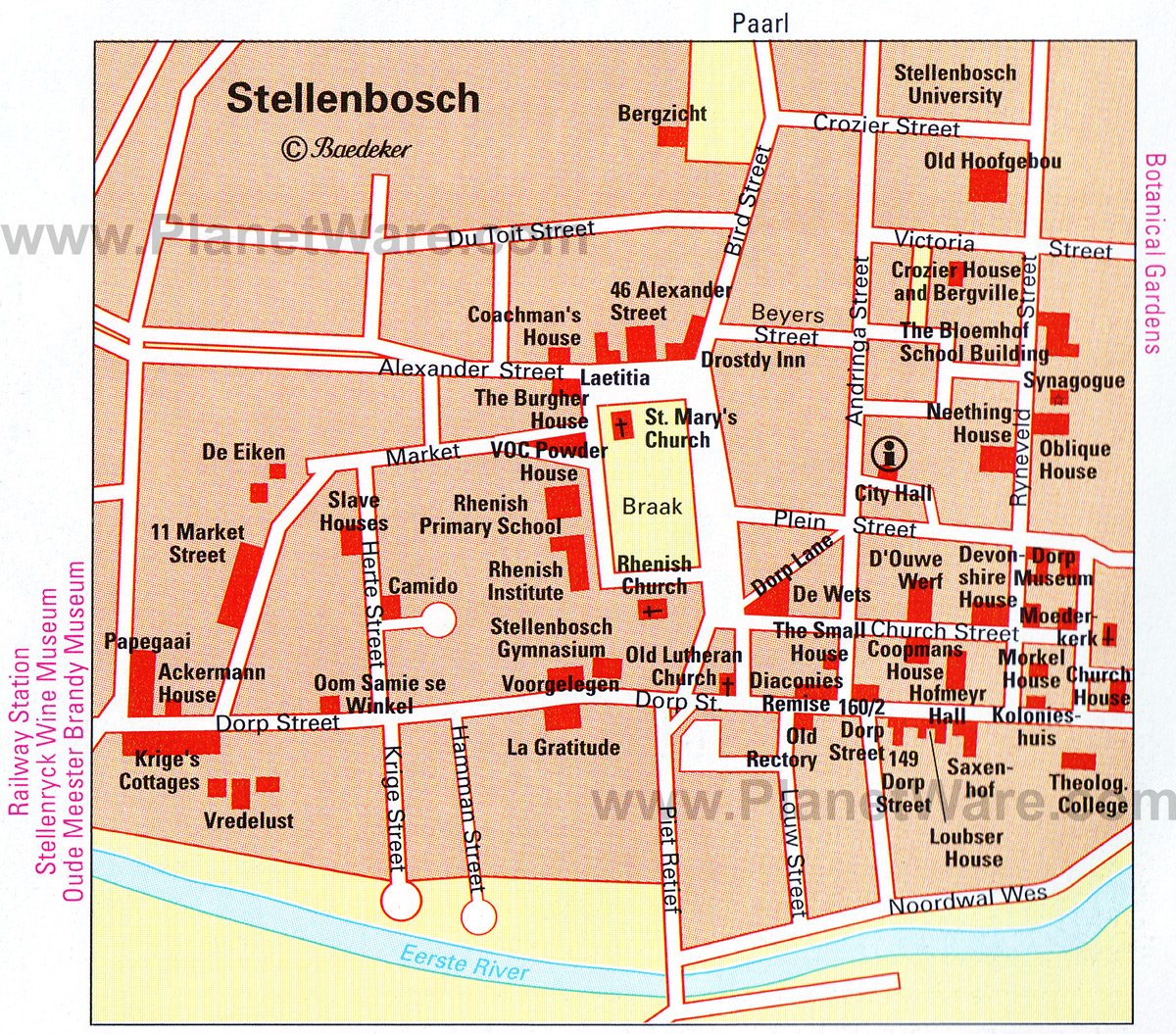
About a 90-minute drive from Cape Town, West Coast National Park is a haven for birders. This coastal park was established in 1985 and encompasses the Langebaan Lagoon, as well as four small offshore islands.
The park is home to more than 250 species of birds, as well as many Arctic migrants in winter. Among the numerous species are cormorants, seagulls, small sandpipers, curlew sandpipers, plovers, gannets, flamingos, and the black-footed penguin.
Wildlife is also abundant, though this is not a park to see Africa's Big 5. Among the mammals are bontebok, eland, springbok, kudu, and blue wildebeest. An asphalted road runs round the lagoon with bird hides and viewing platforms.
In the old farmhouse of Geelbek, at the south end of the lagoon, an information center doubles as the starting-point of several nature trails. Sightseers can also board a bird-watching cruise on the lagoon.
Besides birding, other popular things to do here include hiking and biking the nature trails, kayaking on the lagoon, and photographing the kaleidoscopic wildflowers that carpet the barren landscapes here between August and September.
Official site: http://www.sanparks.org/parks/west_coast/
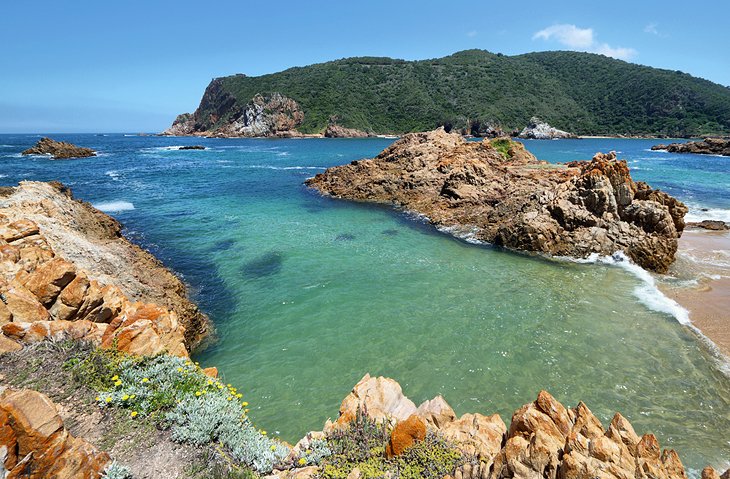
The magnificent Knysna Heads are one of the most popular attractions along the Garden Route, the scenic 200-plus-kilometer drive from Mossel Bay, in the Western Cape, to the Storms River, in the Eastern Cape . These two massive crags loom above a sparkling lagoon and provide plenty of panoramic viewpoints overlooking the thrashing surf below and the rugged and rocky coast.
Hiking trails thread throughout the heads, and sightseeing boats offer a dramatic vantage point from the sea. Visitors can also linger at one of the cafés in the area and dine with a view. Knysna is also famous for its oysters, which the town celebrates at its annual oyster festival held in late June or early July. In the forests around Knysna, hikers can look for wildlife among centuries-old yellowwood trees and beautiful pink-flowered Cape chestnuts where elephants once roamed.
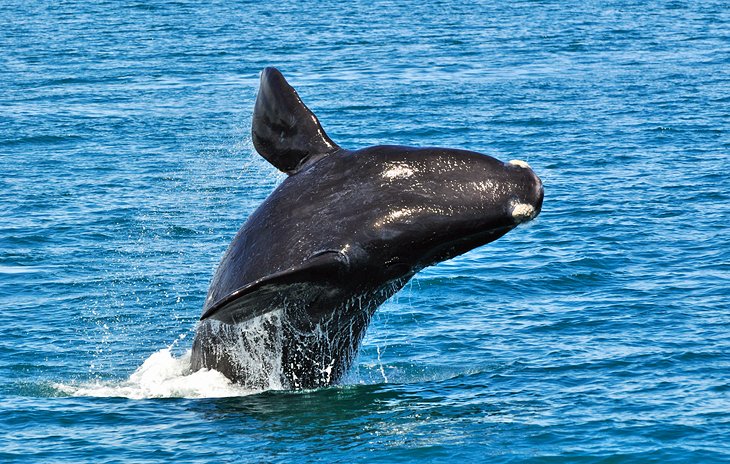
About 120 kilometers east of Cape Town, Hermanus is a popular holiday resort and one of the best places in the world to see whales close to shore . From July through November, large numbers of southern right whales swim along the coast here, and the town celebrates these gentle giants each September at the annual Whale Festival .
Besides this amazing wildlife spectacle, the top tourist attractions here are the beautiful sandy beaches to the east of town and the excellent water sports facilities. Thanks to some record catches, the coastal waters attract large numbers of anglers. The heart of town around the harbor is quite small and easy to explore on foot with restored fishermen's houses now occupied by restaurants and shops.
Other highlights include the 12-kilometer-long Cliff Path and the delightful bird-rich Fernkloof Nature Reserve, just outside of town, webbed with hiking trails that thread through native fynbos and proteas. Book accommodation in Hermanus well in advance during the peak tourist season, from December to January, when the population doubles.
About two hour's drive from here, the De Hoop Nature Reserve encompasses a picturesque stretch of coast and its beautiful hinterland with 1,400 species of plants, some extremely rare, and 63 species of mammals (50 of them on land and 13 in the sea).
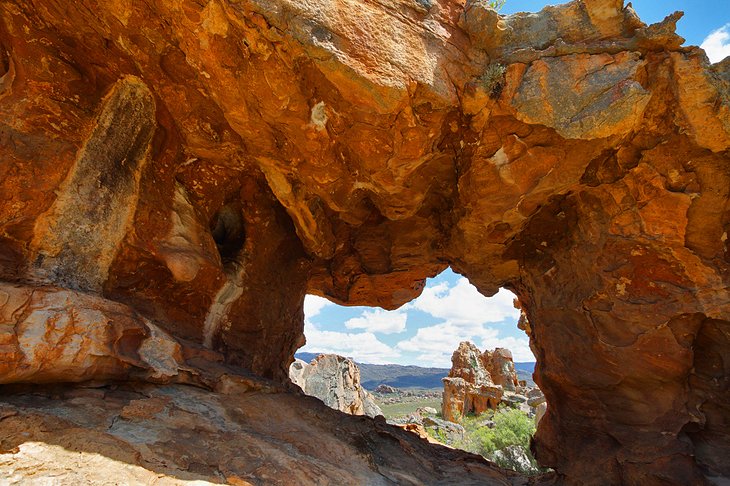
About 300 kilometers north of Cape Town, the rugged Cederberg Wilderness Area wows photographers with its wide-open vistas and bizarre rock formations tinged red by iron oxides. The Cedarberg is also famed for its wooded gorges and caves adorned with Bushman paintings, as well as its unique flora, such as the white snow protea, which is only found in this area.
Named for the once plentiful cedars that grew here, the Cederberg is a range of hills extending for some 100 kilometers between Clanwilliam to the north and Ceres to the south, which reaches its highest point in the Sneeuberg (2,028 meters). Hiking trails criss cross the area, and, not surprisingly, rock climbing is also popular. The best time for a visit to the Cederberg is between September and April-especially September and October when the wildflowers are in bloom.
In the fertile valley of the Olifants River, the town of Clanwilliam makes a great base for visiting the Cederberg Wilderness Area, with its Cape Dutch-style buildings; Rooibos Teahouse; and the beautiful Ramskop Nature Reserve, which ignites in a blaze of colorful wildflowers during August and September.
North of Clanwilliam, a scenic road winds its way up to the Pakhuis Pass with panoramic views. Another worthwhile side trip, 32 kilometers from Clanwilliam, is the beautiful Biedouw Valley with bizarre rock formations and gorgeous spring flowers. Also stop by the quaint little town of Wupperthal with its white-washed thatch-topped cottages.
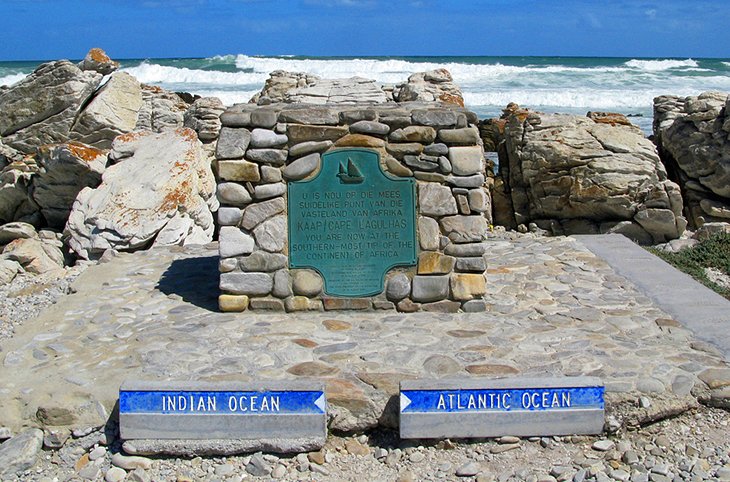
About 220 kilometers from Cape Town, Cape Agulhas is the southernmost point of the Republic of South Africa as well as the African continent itself. Here, the Atlantic and Indian Oceans meet, a fact that is announced rather unassumingly on a small cobalt blue sign. Although not as scenic as the dramatic coastline at Cape Point ( South Africa's most southwesterly point), this is a place for travelers to tick off their bucket list. It is also a good place to stop and breathe in the crisp sea air on the gently sloping rocky beaches, and snap a photo next to the sign.
Cape Agulhas means "Cape of Needles," possibly alluding to the fact that compass needles of the early Portuguese navigators pointed due north here; others think that the name refers to the sharp reefs off the coast. The lighthouse, now a museum, was built in 1848 and is the second oldest in South Africa. A radio beacon warns ships rounding the Cape, although visitors will see the rusted hulls of vessels that succumbed to frequent rogue waves. The sea in this area is one of the world's most productive fishing grounds.
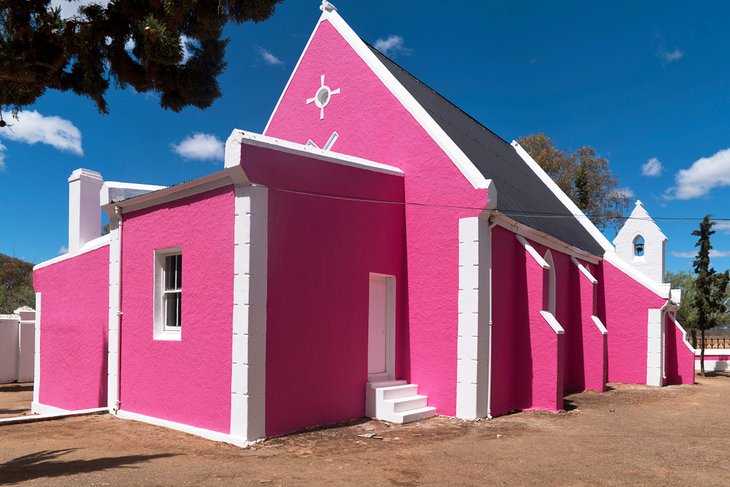
Matjiesfontein , in the Little Karoo, halfway between Cape Town and Beaufort West, is a quirky little town that feels like it's frozen in time. In 1880, a Scot named James Logan settled here and founded a spa after the dry air cured his chronic lung disease. The spa was a great success, and in the late 19th century, it lured the rich and famous, among them the Sultan of Zanzibar and Lord Randolph Churchill (Winston Churchill's father).
Matjiesfontein was declared a national monument in 1975, and today, it preserves many buildings of the Victorian era, including the elegant Lord Milner Hotel. Staff dressed in period costume add to the historical feel. Matjiesfontein is popular with South Africans for weekend trips as well as international travelers who stop here on train journeys from the interior of the country to Cape Town.
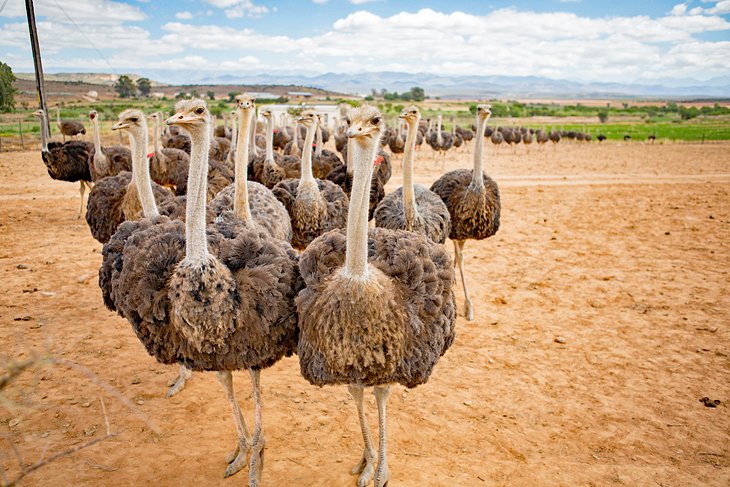
Oudtshoorn is all about the ostriches. This quaint old town nestled between the Outeniqua and Swartberg Mountains in the Klein Karoo dubs itself the "ostrich capital of the world." And indeed you will find everything from ostrich egg omelettes to ostrich steaks on restaurant menus, while shops are filled with ostrich feather dusters and ostrich leather purses and even ostrich biltong, which is the South African version of jerky.
There are also numerous farms surrounding Oudtshoorn that breed ostriches and give tours. Highgate Ostrich Show Farm is one such place, 10 kilometers south of town. Back in town, the C.P. Nell Museum tells the story of Outdshoorn's relation to this flightless bird, tracing its history back to the first ostrich-feather boom of 1865 to 1870.
If you're sick of ostriches, head north to the Cango Caves. They are a wild network of 20-million-year-old limestone caves that are the largest of their kind in all of Africa. Tours are offered of this awesome underground wonder.
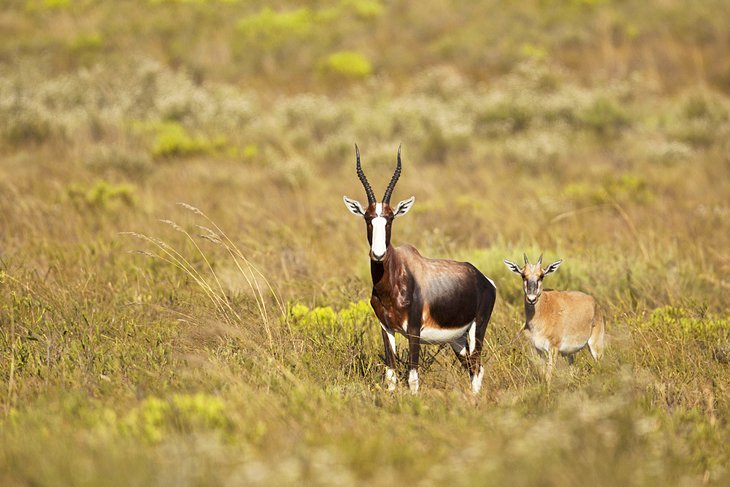
Located on the N2 highway about 220 kilometers east of Cape Town, Swellendam is South Africa's third oldest own and is well preserved. Most of the 50 heritage buildings display the signature white Cape Dutch architecture, and the town hosts a number of good restaurants and small hotels.
The town sits at the edge of the beautiful Langeberg Mountain range. Pay a visit to Two Feathers Horse Trails to explore on horseback. Whether you are a beginner or an expert, they will tailor trail rides for you.
Swellendam also serves as the gateway to South Africa's smallest national park, Bontebok National Park . The park was established in 1931 for the purpose of preserving the bontebok, which is a medium-sized antelope.
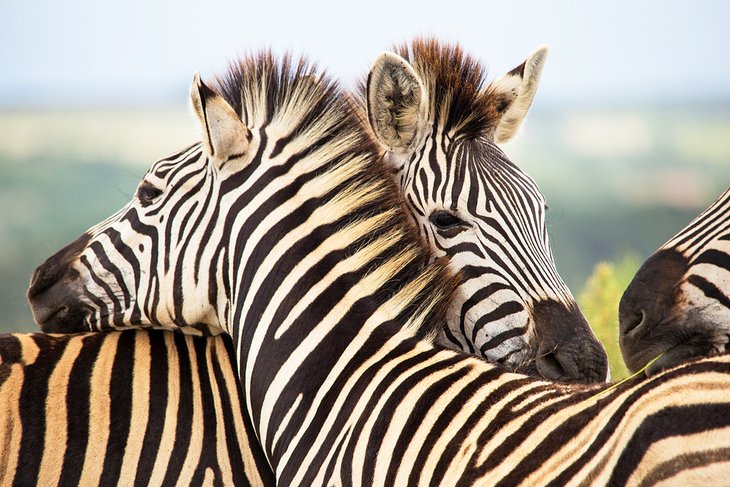
While not as well known as other South African provinces for its safari experiences, the Western Cape is nonetheless still home to opportunities for Big Five wildlife viewing. Yep, you can see lions, buffalos, elephants, rhinos, and leopards (the Big Five) along with a host of other African animals from giraffes to zebras here.
Head to the Gondwana Game Reserve in Kleinberg on the Garden Route for one such experience. The property is home to a few different lodging options. You can stay at the luxury Kwena Lodge, which features 180-degree views from giant windows thanks to the circular design of the 14 individually standing suites.
The Fynbos Villas and Bush Villas are perfect for families. They are spacious three- or four-bedroom dwellings. They come with kitchens, and a dining area opening onto a wraparound deck for game viewing and endless stars at night. There is also a tented eco-camp that is a very unique experience for those who want to be involved in conservation work and have a remote, natural safari experience. Three- and five-night packages are available.
Unlike many wildlife reserves in South Africa, Gondwana offers a number of different packages, from all-inclusive with full board and game drives to bed and breakfast choices.
Address: R327 Heuningklip Farm, Herbertsdale, 6505
Official site: https://gondwanagr.co.za/
More Related Articles on PlanetWare.com
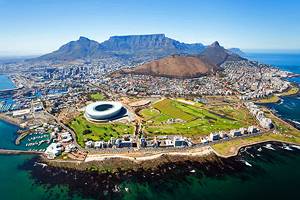
Go to the Mother City : Cape Town is the major city of the Western Cape and a destination in its own right. It would be easy to spend weeks exploring the Mother City, as it is called. For a more in-depth read check out our guide to the Top-Rated Tourist Attractions in Cape Town & Easy Day Trips . It will introduce you to top beaches like Camps Bay and Clifton Beach , as well as historic must-sees, like Robben Island , where Nelson Mandela was imprisoned for 18 years.
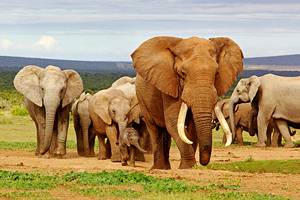
Eastern Cape Explorations: From the Western Cape it is also easy to access the Eastern Cape, which is filled with game parks, culture, and plenty of wild beaches. For more on exploring this province, see our Top-Rated Tourist Attractions in the Eastern Cape article. It gives the scoop on areas like the Wild Coast, where the surf beaches are fantastic and the Xhosa culture strong, as well as Addo Elephant Park , South Africa's third largest national park.

More on South Africa
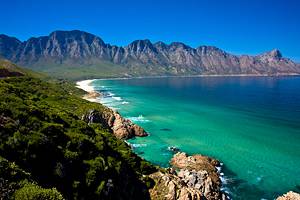

Touropia Travel
Discover the World
15 Best Places to Visit in Western Cape
By Alex Schultz · Last updated on May 21, 2024
Encompassing many of South Africa’s most popular tourist attractions , the Western Cape has a seemingly never-ending list of amazing places for visitors to check out. Indeed, the fourth-largest province in the country has a staggering array of beautiful landscapes on show, with Cape Town’s distinctive backdrop and the gorgeous scenery of the Garden Route just two of its many highlights.
Boasting some of the oldest settlements in the country, the Western Cape also has lots of history for you to delve into, with the famous Robben Island attracting crowds of visitors every year. Whether it’s the vineyards and wineries of Stellenbosch, the fantastic whale watching at Hermanus, or the adorable penguins at Boulders Beach, one could spend a lifetime exploring all the best places to visit in Western Cape.
Western Cape Map
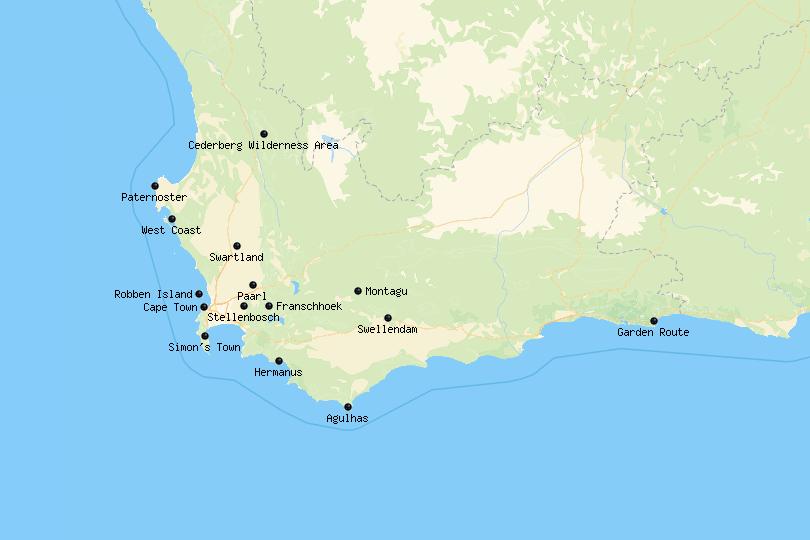
15. Paternoster [SEE MAP]
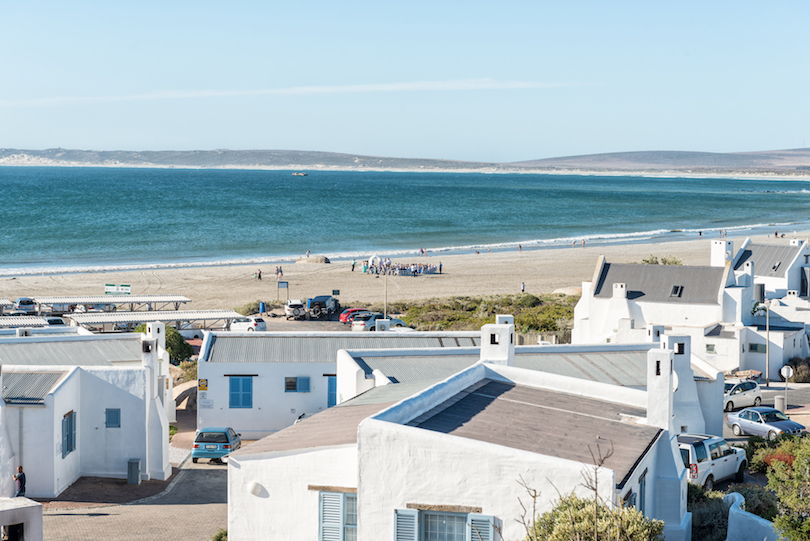
One of the oldest fishing villages in the Western Cape, sleepy, laidback Paternoster is a great place to head to if you’re looking for a quiet holiday. The white-washed cottages, rugged coastline, and beautiful white-sand beaches certainly make for a scenic setting.
Although ideal for people looking to kick back and relax, Paternoster also has a wealth of great outdoor activities for you to enjoy, with hiking and mountain biking around the Cape Columbine nature reserve particularly popular pastimes.
In addition to this, visitors can also go kayaking, snorkeling, and scuba diving, or even take a dolphin or whale watching tour to catch a glimpse of the area’s abundant marine life.
14. Agulhas National Park [SEE MAP]
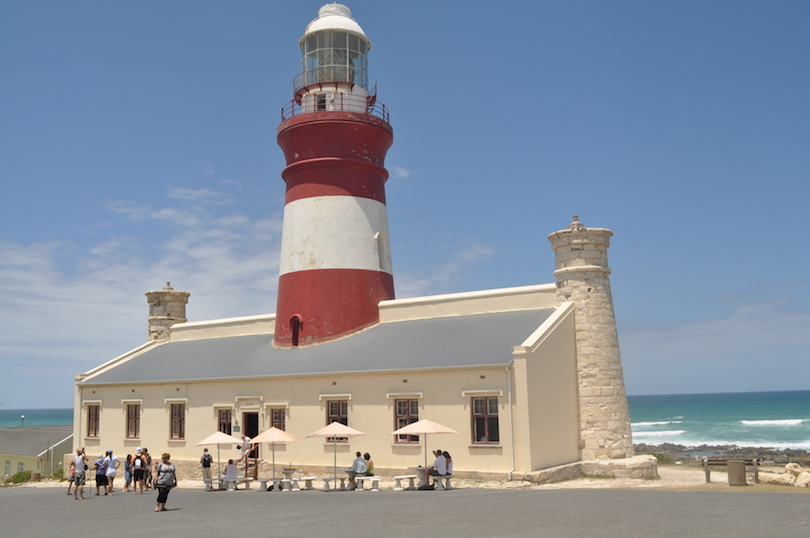
Located at the southernmost tip of the continent, where the Atlantic and Indian Oceans dramatically meet at the Cape of Storms, Agulhas National Park is a fascinating place to visit. Over the centuries, numerous ships and sailors have met their fate along its unwelcoming, rugged coastline.
Humans have long inhabited the area, and while exploring the park, visitors can check out the old lighthouse and museum, which house part of shipwrecks and ancient stone utensils once used by the Khoisan people.
With lots of marine, mammal, and birdlife also on show, the national park is delightful to hike around; wherever you go, the scenery is absolutely stunning. With dolphins, whales, and porpoises sometimes spotted offshore, Agulhas National Park is definitely worth visiting if you have the chance.
13. Swellendam [SEE MAP]
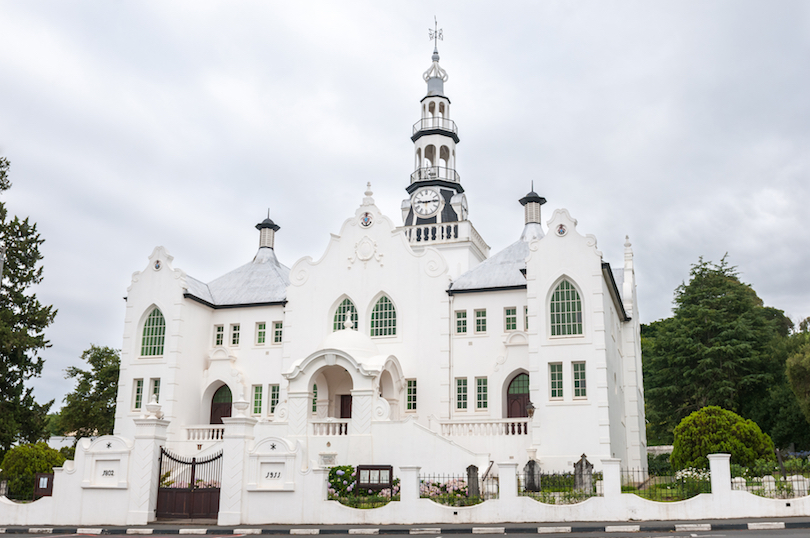
One of the oldest towns in the whole of South Africa, the charming and picturesque Swellendam definitely merits a visit. There are many historical and cultural landmarks to see around town, while its location at the foot of the Langeberg Mountains makes for a spectacular setting.
With a laidback, peaceful feel to it, Swellendam is very pleasant to wander around, with plenty of impressive colonial-era architecture and national monuments on show. The region’s many farms mean that there is loads of delicious local produce for you to try out too.
Just a stone’s throw away from the town are Marloth Nature Reserve and Bontebok National Park, both of which have a multitude of fantastic trails and paths for you to hike along.
12. Montagu [SEE MAP]
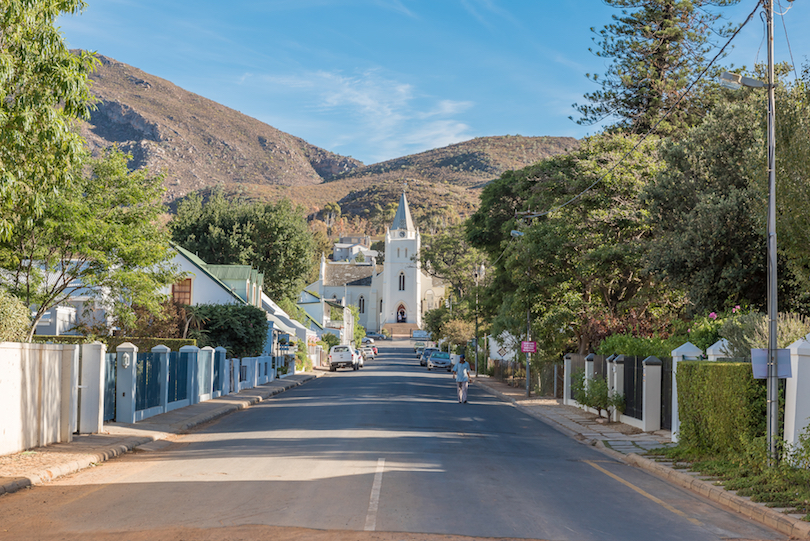
Nestled away in the Langeberg Mountains with rivers either side of it, it’s not without good reason that the small town of Montagu is known as the ‘mountain mecca.’ Famed for its fantastic wineries and vineyards, its scenic setting, and healing mineral springs, Montagu really is a treat to visit. Many guests end up staying longer than they intended.
While its wonderful hot springs and beautiful gardens are perfect for relaxing in, visitors can also go abseiling, mountain biking, or paragliding in the surrounding natural areas. Lying along Route 62 – the country’s very own version of Route 66 in the States – Montagu is also a great base from which to explore the Klein Karoo.
11. Paarl [SEE MAP]
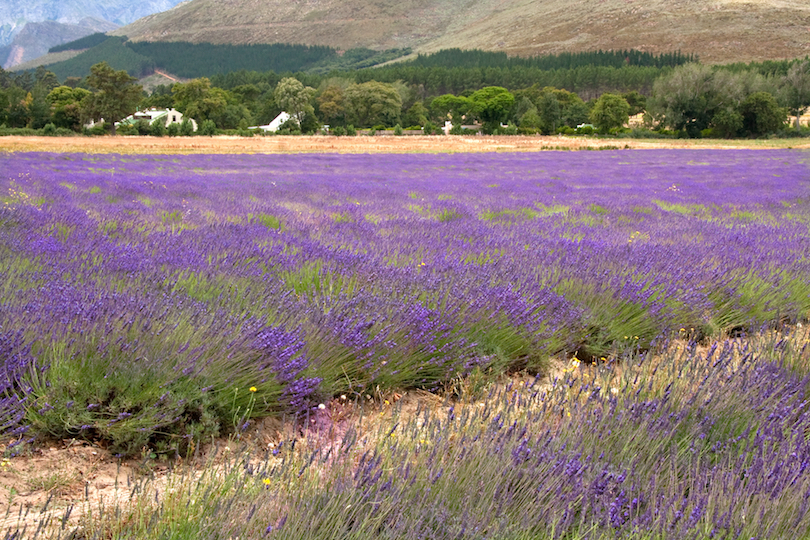
Founded all the way back in 1687, Paarl boasts a rich history and culture, with lots of lovely Cape Dutch houses, elegant gardens, and national monuments on show.
Surrounded by towering mountains and fauna and flora-filled nature reserves, the town also has lots of great local produce and delicious wines for you to try out; all produced on its many farms and vineyards.
While ambling around the peaceful town and taking in the impressive Georgian, Victorian, and Edwardian buildings is a lovely way to pass the time, visitors shouldn’t miss out on a trip to the nearby Drakenstein Prison. It was from here that Nelson Mandela was finally released from captivity.
10. Swartland [SEE MAP]
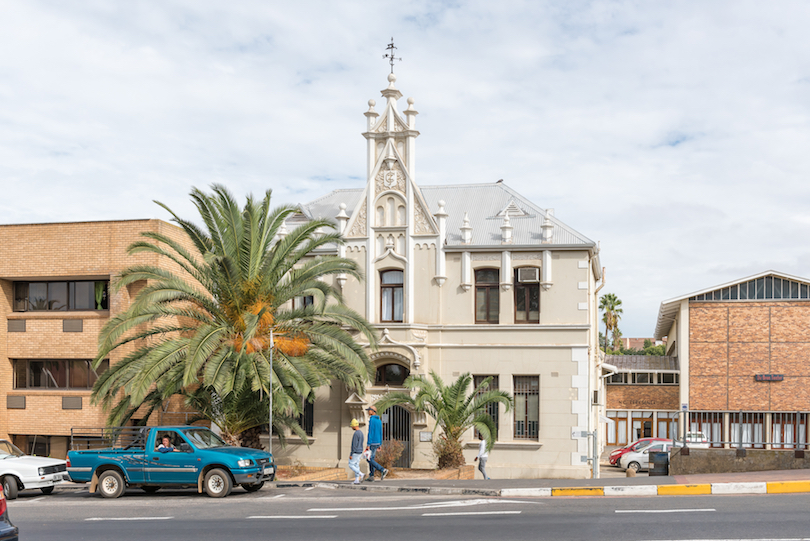
Lying just to the north of Cape Town, the beautiful Swartland region of South Africa consists of endless fertile plains shimmering with golden wheat in the summer, with farms, vineyards, and orchards punctuating the landscape.
In winter, the scenery is just as arresting; the region takes on a dark appearance due to the Renosterbos bushes that flower in the area.
Known as the breadbasket of the Cape, Swartland also boasts some lovely towns and villages, such as Darling, Riebeek West, and Riebeek Kasteel. A plethora of fresh produce is sure to be on offer wherever you may go from the many picturesque farms in the region.
9. Simon's Town [SEE MAP]
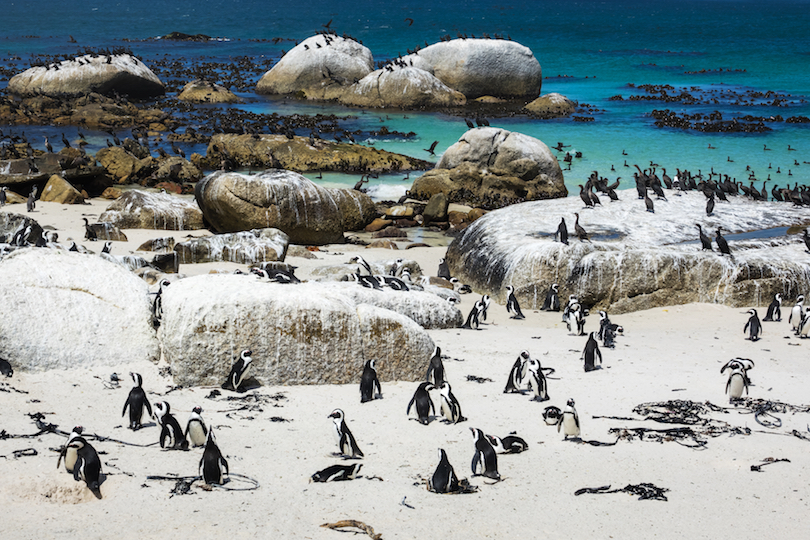
Located just outside of Cape Town on the Cape Peninsula, Simon’s Town’s has a scenic and sheltered setting on the shores of False Bay. This location means that for more than 200 years, it has been a naval base to both the British and South African navies.
The beautiful mountains looming over the town not only form an impressive backdrop but are also home to a number of great trails and paths for visitors to explore.
One of the main attractions is the magnificent Boulders Beach, which is famed for its cute residents; many people come to the beach to gaze at the hundreds of African penguins inhabiting its sandy shores.
With lots of great seafood for the taking, and shark cage diving, boat trips, and kayaking also available, Simon’s Town makes for a fabulous day trip from Cape Town, with lots for you to see and do.
8. Franschhoek [SEE MAP]
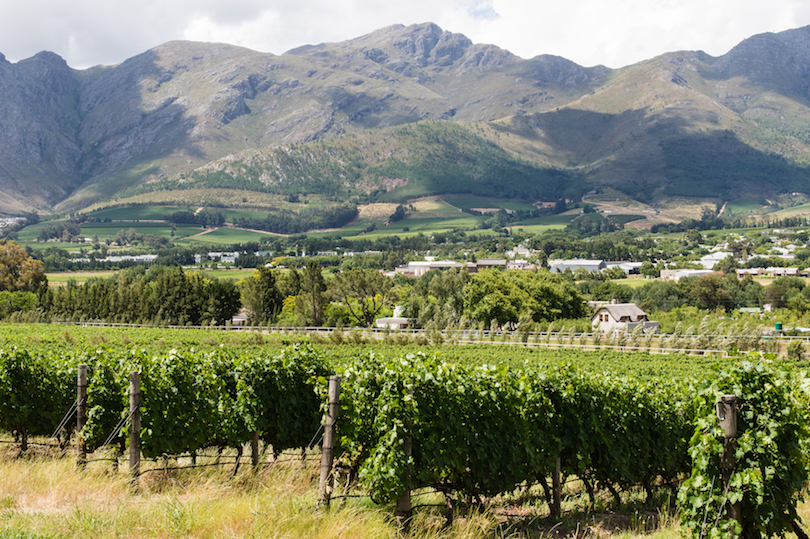
Founded in 1688 in a gorgeous, verdant valley of the same name, Franschhoek boasts a wealth of fantastic vineyards and wineries, with lots of great restaurants to boot.
The small town is very picturesque, as it is surrounded by mountains. One of the best ways to explore the valley is to board the Franschhoek Wine Tram , which takes you to many of South Africa’s best wine estates.
While relaxing in the beautiful surroundings and sampling delicious wines is how many people choose to spend their time in Franschhoek, there are also some excellent mountain biking trails and hiking paths for you to explore in the nearby mountains and hills.
7. West Coast National Park [SEE MAP]
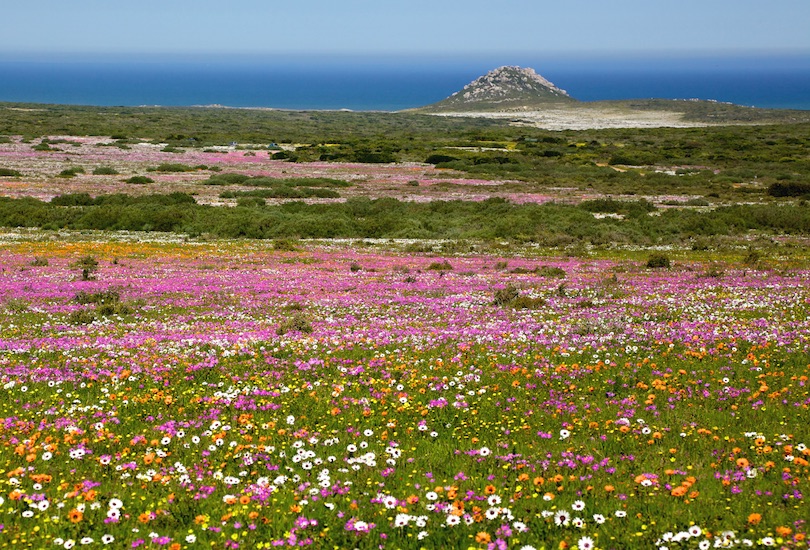
Centered around the shimmering blue waters of Langebaan Lagoon, West Coast National Park will delight nature lovers and outdoor aficionados alike. It is bursting with white dunes, verdant wetlands, and a rugged Atlantic Ocean coastline.
With plenty of migratory birds, and mammals such as mountain zebra, ostriches, and antelope on show, it is a great place to spot local wildlife, and many hiking paths and trails wind their way through its diverse landscapes.
Only an hour and a half’s drive from Cape Town, West Coast National Park attracts visitors looking to immerse themselves in nature and escape the city’s bustling streets.

6. Robben Island [SEE MAP]
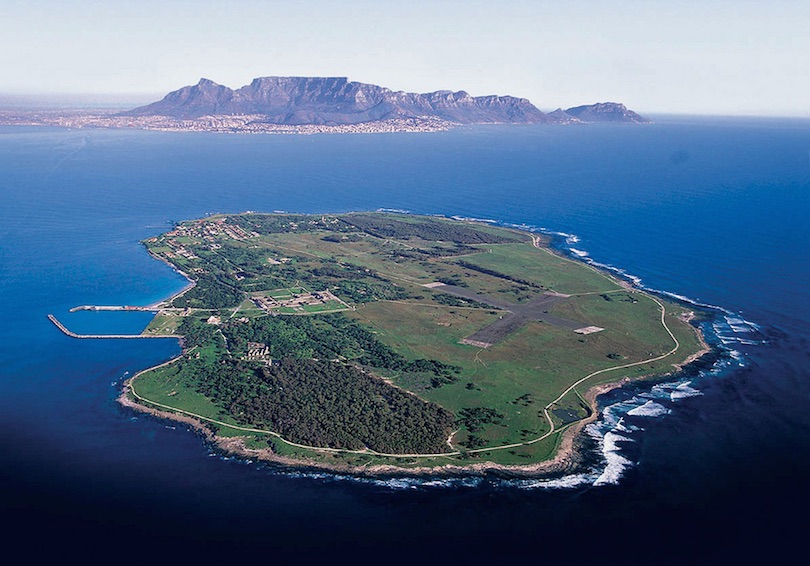
Located just off the coast of Cape Town in Table Bay, it is on Robben Island that Nelson Mandela was famously imprisoned for 18 of his 27 years spent in jail as he protested against the apartheid regime in South Africa.
While the island has mainly been used throughout its history to house political prisoners, nowadays, it is a popular museum and tourist attraction. Many people come to the former prison to learn about both the lives of its former inmates and life in South Africa under both colonial rule and apartheid.
A very interesting and moving place, visiting Robben Island is a must for anyone interested in learning more about the country’s troubled past.
5. Hermanus [SEE MAP]
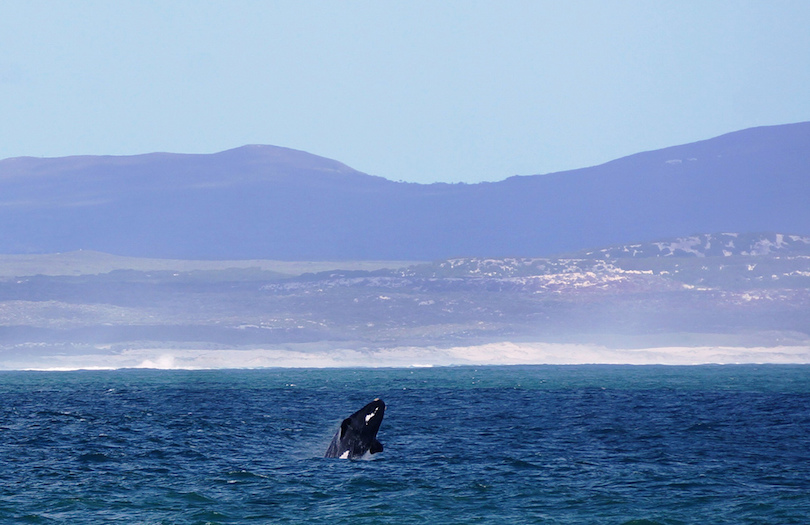
Famous for its fantastic whale watching, Hermanus is the place to head to if you want to catch a glimpse of these majestic creatures up close in their natural habitat. The small town has a number of great vantage points to spy them from, with Gearing’s Point the best of the bunch.
Alternatively, you can take a whale-watching boat tour or go sea kayaking around the bay. Although whales are what most people come for, Hermanus has some lovely rugged coastline for you to explore, as well as some breathtakingly beautiful beaches, such as those of Voelklip and Pearly.
4. Cederberg Wilderness Area [SEE MAP]
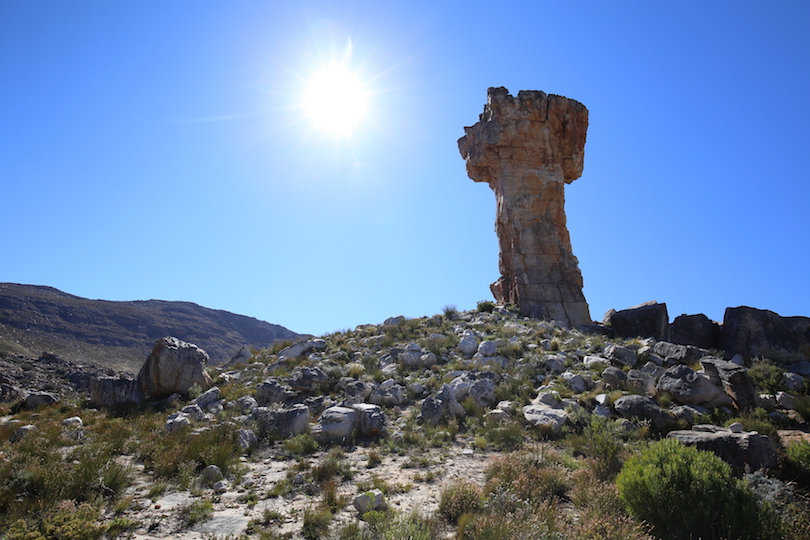
Covering a vast expanse of territory, the Cederberg Wilderness Area encompasses some spectacular scenery. Domineering mountains stand side by side with impressive rock formations, such as the distinctive Wolfberg Arch and the awe-inspiring Maltese Cross.
A very peaceful place to visit, Cederberg Wilderness Area has some great hiking, mountain biking, and rock climbing for visitors to enjoy. There’s also some fascinating San rock art dating back millennia on show.
3. Garden Route [SEE MAP]
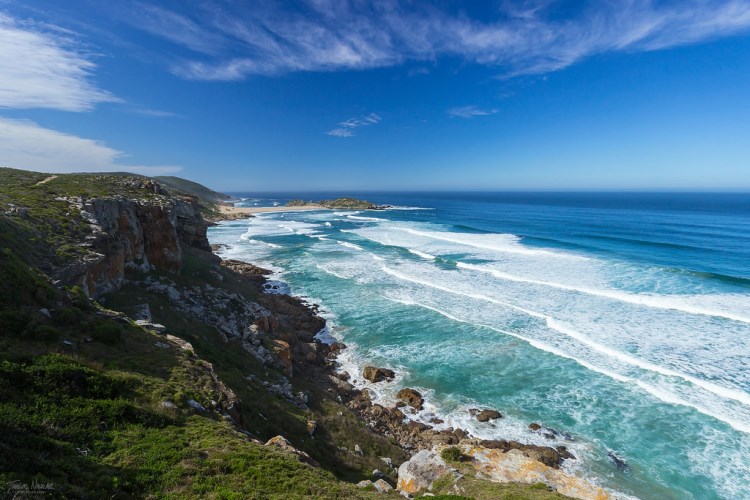
Stretching more than 300 kilometers along the southwest coast of South Africa, the Garden Route is very popular with locals and foreigners alike. It takes you past some breathtaking scenery, with lots of lovely little towns and villages for you to stop off at along the way.
Sandwiched between the Outeniqua and Tsitsikamma mountains and the Indian Ocean, the beautiful beaches and bays that dot the scenic coastline offer up a myriad of astounding views and outdoor activity opportunities.
With idyllic towns such as Knysna, Plettenberg Bay, and Mossel Bay for you to check out, it’s no wonder that the Garden Route is one of South Africa’s prime tourist destinations.
2. Stellenbosch [SEE MAP]
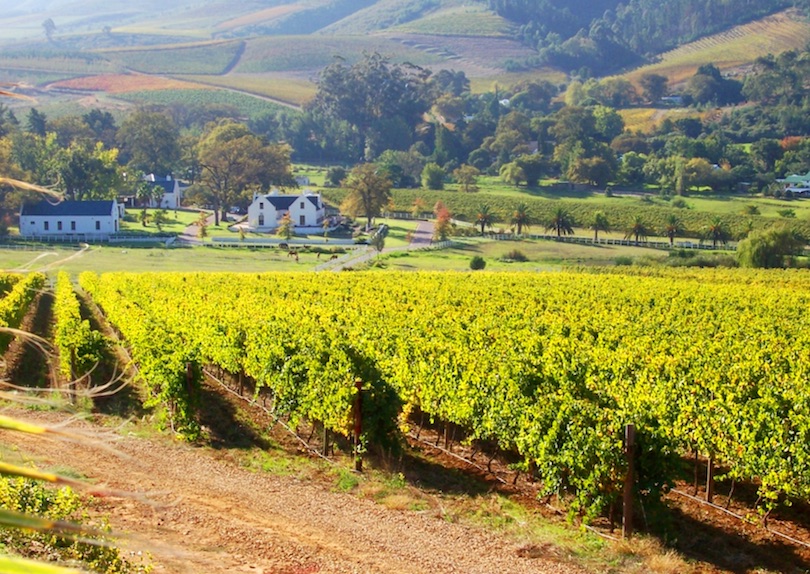
For wine lovers, no visit to South Africa can be complete without stopping by Stellenbosch to sample some of the region’s fantastic local produce. There is a multitude of great wineries, vineyards, and wine estates for you to delve into.
Located in the heart of the Cape Winelands , Stellenbosch is the second oldest European settlement in the country. The center of town has lots of lovely Cape Dutch colonial architecture to discover.
With a lively and multicultural feel to its streets, thanks to its large university, the town has some great nightlife on offer, and visitors will never tire of Stellenbosch’s scenic setting below the mountain of the same name.
1. Cape Town [SEE MAP]
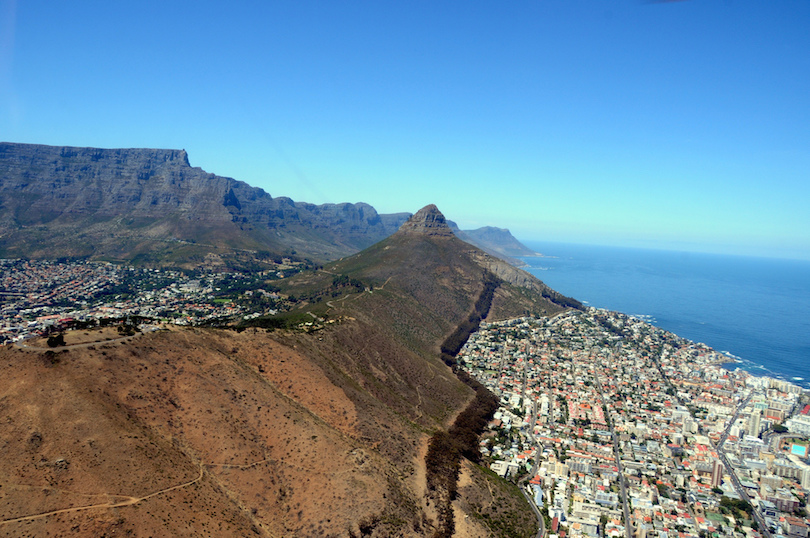
The second-largest city in South Africa, Cape Town is located in a breathtakingly beautiful setting on the shores of Table Bay, with the famous Table Mountain, Devil’s Peak, and Lion’s Head looking down on it.
Blessed with such a dramatic backdrop, the city is visually stunning, and the vibrant feel about its streets is no less alluring.
See also: Where to Stay in Cape Town
The continent’s southernmost city and the oldest settlement in the country, Cape Town is bursting with important and interesting historical and cultural landmarks. Robben Island lies just offshore, and the surrounding nature offers up a wealth of great outdoor activities.
With lots of fascinating museums, a thriving arts and culture scene, and great restaurants, nightclubs, and bars to boot, Cape Town really does have something for everyone to enjoy.
Share this post:
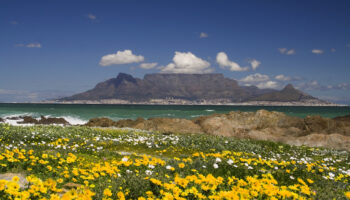
Best Time to Visit Cape Town: Month-by-Month Guide
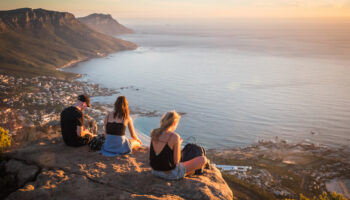
27 Top Tourist Attractions in Cape Town
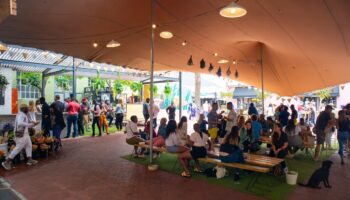
7 Best Food Markets in Cape Town: Flavors of The Mother City
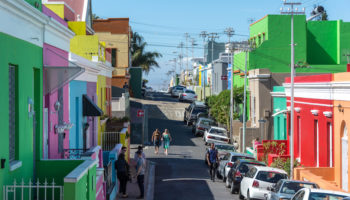
Where to Stay in Cape Town: 10 Best Neighborhoods
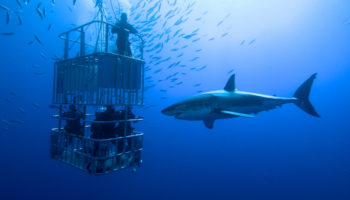
7 Best Day Trips from Cape Town
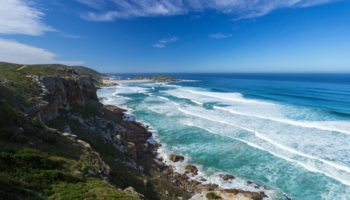
10 Best Places to Visit in South Africa
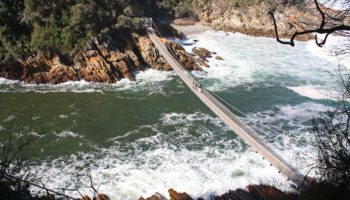
15 Best Places to Visit in Eastern Cape

The Ultimate Whale Watching Weekend in Hermanus
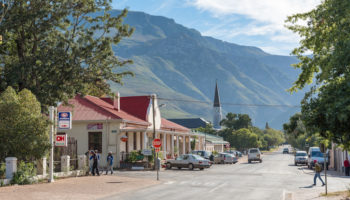
16 Most Charming Small Towns in South Africa
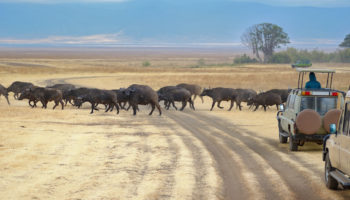
10 Most Beautiful National Parks in South Africa
Reader interactions, leave a reply cancel reply.
Your email address will not be published. Required fields are marked *
This site uses Akismet to reduce spam. Learn how your comment data is processed .

CAPE TOWN FOR CAPETONIANS

Western Cape tourism grows by 16% in first quarter
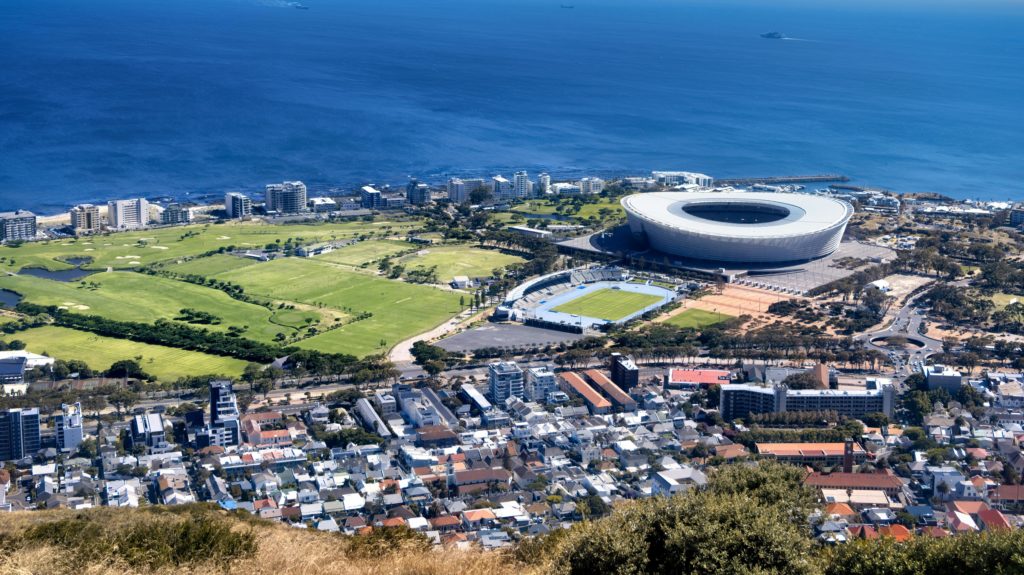
The Western Cape continues to shine as a popular destination, with tourist arrivals to Cape Town by air increasing by an impressive 16% year on year between January and March of this year, reaching 336 268.
Also read: Wesgro plans to take young minds up Table Mountain through Roblox
This is according to Wesgro, the Western Cape Government’s tourism, trade, and investment promotion agency, in its first-quarter tourism report for the period January to March 2024.
Tourism is a cornerstone of the strategic economic initiative G4J, or ‘Growth for Jobs,’ and the government’s goal is ambitious: to stimulate the economy, attract investments, and create job opportunities that transform lives and lift many more residents from poverty to prosperity, according to Finance and Economic Opportunities MEC Mireille Wenger.
‘To achieve this, we’re setting ambitious targets, like doubling our visitor numbers by 2035, and working to remove obstacles to growth like the visa regime.’
Explore Cape Town and its surroundings with these incredible deals on cars for under R100 000. Find car listings here .
‘For every 100 international visitors, the Western Cape gains R2.1 million in direct tourist spend, adds R500 000 to our GDP, and creates two local jobs. This excellent performance underscores the importance of tourism for growth and job creation in our region.’
Wenger said: ‘To continue to build on our impressive growth, the Western Cape government recently launched the latest iteration of the R4 million Tourism Growth Fund, aimed at increasing visitor numbers, by continuing to build our destination, enrich our attractions, and expand our offerings, ultimately creating more jobs and prosperity across the province.’
Wesgro CEO Wrenelle Stander said that between January and March, the UK ranked as the top overseas air market to Cape Town, followed by Germany, the US, the Netherlands and France.
European markets accounted for eight of the top ten source markets, indicating a full recovery from 2019.
Between January and March, Namibia was the leading African air market to Cape Town, with Zimbabwe a close second. Angola, Mozambique, and Kenya rounded out the top five.
‘Air arrivals to Cape Town from the rest of Africa during the period January and March reflected a full recovery from eight out of the top 10 source markets to Cape Town versus January and March 2024. These markets included Zimbabwe, Mozambique, Kenya, Mauritius, Nigeria, Botswana, Tanzania, and Ghana,’ Stander said.
Cape {town} Etc discount: Looking for things to do in the city, at half the price? Get exclusive offers here .
WCED and Wesgro join forces to transform education and drive innovation
Picture: Jean van der Meulen / Unsplash
Article written by Murray Swart
2024 elections.
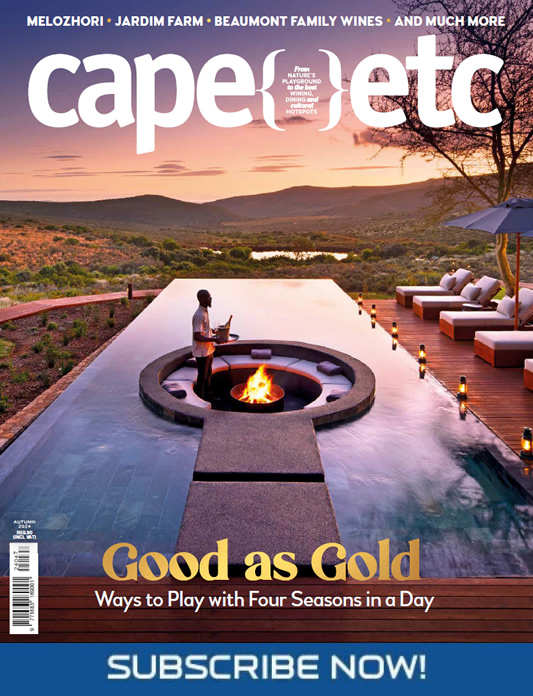
CapeTownETC
Subscribe to our Newsletter cheap cars for sale cheap cars for sale in western cape cheap cars for sale in cape town Joburg news News in Johannesburg Bikes for sale


- Testimonials
- Meet the Team
- Work With Us
- Outlook Features
- Sign Up Today
- Travel Guides
- Middle East
Western Cape : Landmark Attractions

Golf in the Garden Route
Cape Town and the Western Cape is a world-renowned golfing destination, with a diverse portfolio of courses to play, many of which have been designed by some of the world’s best golfers. The Garden Route is arguably the home of golf in the Western Cape with some of the most popular courses found here. From Gary Player to Ernie Els, there is a reason legends of the game have a base on the Garden Route.
Recently voted by The Telegraph as one of the best destinations worldwide for watching marine mammals, Hermanus is rated as one of the top 12 whale-watching locations in the world by the World Wildlife Fund. It offers the best land-based viewing opportunities because the whales often come within metres of the shoreline, including southern right whales, humpback whales, and Bryde’s whales.
The Cross Cape Cycle Route
Crossing the length of the Western Cape – from Plettenberg Bay to Stellenbosch – the newly-launched cycle route offers a truly unique way to experience the province. From majestic vistas and rugged mountain passes to coastal towns and rustic inland villages, this is a bucket list experience for cyclists and non-cyclists alike. Open 24/7, 365 days of the year, the route is completely free of charge – all you need is a bike and a plan of action!

Seychelles Travel Guide

Seychelles : Outlook Recommends

Seychelles : Tourism Insights

Seychelles National Botanical Gardens in Focus

Seychelles : Landmark Attractions

Getting To and Around Seychelles
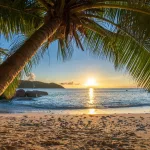
Seychelles Travel Guide 2022
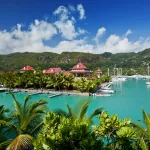
Mahé In Focus

Seychelles Travel Guide 2021
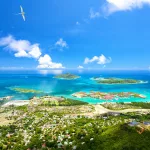
Seychelles Travel Guide 2019
More africa travel guides.

Western Cape Travel Guide

Kenya Travel Guide
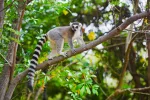
Madagascar Travel Guide
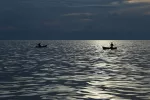
Malawi Travel Guide

Mauritius Travel Guide
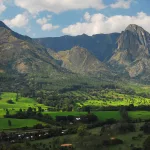
Malawi Travel Guide 2022
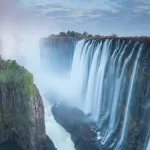
Zambia Travel Guide
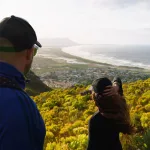
South Africa’s Western Cape Travel Guide
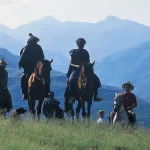
Lesotho Travel Guide
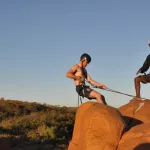
Eswatini Travel Guide

Jordan Banks : Behind the Lens

Tootbus : Travel Business

Queensland Indigenous Womens Ranger Network

Under SXM : Creating Sustainable Underwater Experiences

Hidden Spots for Cherry Blossom Season : Round Up

Urbino : The Last Stop

Enrico Costantini : Behind the Lens

Lepogo Lodges : A Sustainable Safari Experience

Casa de Olivos : Sustainability Stories

Opulence on the Orient Express
Sign in to your account
Username or Email Address
Remember Me

Search form
- Publications Forms and Guides Policies and Legislation
- Facilities Public Entities Projects Events Dictionary
- National Government Provincial Government Local Government
22Covid-19 Alerts
You are here, department of economic development and tourism, contact us:.

We are working towards a Western Cape that has a vibrant, innovative and sustainable economy, characterised by economic growth and employment.
QUICK LINKS:

News and media
Experience Cape Town and the Western Cape
SMME Booster Fund 2024
G4J Tourism Challenge Fund

Our Service Helplines
- Red Tape : [email protected]
- Office of the Consumer Protector: 0800 007 081/ [email protected]
- Tourist Guide Registration: 0860 142142 / [email protected]
- Tourist Safety : [email protected]

Resources for Your Business
- How to start a business
- Get advice on growing your business
- How to get funding for your business
- Want to learn how to invest in start-ups?
- How to beat load shedding

- Procurement-related Matters
- Integrated Economic Development Services
- Economic Planning
- Economic Sector Support
- Tourism, Arts and Entertainment
- Business Regulation and Governance
- Skills Development and Innovation
Minister of Finance and Economic Opportunities

Find out about our departmental strategy at the links below:
- Growth for Jobs (G4J) Strategy
- Our organisational structure
- Annual Reports
- Annual Performance Plans
- Five-Year Strategic Plan 2020-2025
- 2023/24 budget for Vote 12 DEDAT
- Citizens Reports
- Service Standard Schedule
- Bids Received
- PAIA Manual
- Privacy Notice
- Service Charter
- Service Delivery Improvement Plan 2023 - 25

Western Cape Tourism - the premier Province in South Africa and tourist mecca for safari, accommodation, car hire, flights, package deals to, from and around South Africa

IMAGES
COMMENTS
The Western Cape is one of the domestic travel destinations in South Africa preferred by foreign tourists. With several local attractions and venues, the city of Cape Town received 2.6 million international visitors in 2018 with a growth of 11.5% in international arrivals at Cape Town International Airport. International tourists aren't the only ones discovering the beauty of the Western Cape.
The Western Cape can be divided in the following regions: Western Cape regions - Color-coded map. Cape Peninsula. The centre of tourism in South Africa, encompassing the Cape Town metro area, Cape Point and the False Bay area. Cape Winelands. East of Cape Town and easily visited in a day trip from Cape Town. West Coast.
Welcome to Cape Town and the Western Cape. Embrace natural luxury in Robertson. Cheetah Tracking on Foot. An inspiring place to discover. Welcome to the Western Cape, where majestic mountains meet wild, open seas. This is a place of rolling green valleys and vast, untouched plains. A place where you can connect with a diverse group of people.
We are the Official Tourism & Trade, Investment Promotion Agency for Cape Town and the Western Cape. Our divisions include Tourism, Trade, Investment Promotion, Research, Film & Media and the Convention Bureau. We are a region of unlimited potential. And this translates into unlimited opportunity. Whether you're interested in unique travel experiences, investment, shooting a
View from Table Mountain. Table Mountain is a flat-topped mountain forming a prominent landmark overlooking the city of Cape Town in South Africa. It is a significant tourist attraction, with many visitors using the cableway or hiking to the top. The mountain forms part of the Table Mountain National Park and is one of the 7 Wonders of Nature.
Africa. The splendours of the Western Cape lie not only in its world-class vineyards, stunning beaches and mountains, but also in lesser-known regions, such as the wide-open spaces of the Karoo, the many nature reserves and the wilderness areas. Make sure you get out into these wild, less-visited areas for birdwatching and wildlife adventure ...
Neethlingshof. 6.5km west of Stellenbosch on Polkadraai Rd (the R306); 021 883 8988, neethlingshof.co.za. Centred around a beautifully restored Cape Dutch manor dating back to 1814, reached down a kilometre-long avenue of stone pines, Neethlingshof's first vines were planted in 1692.
Western Cape Tourism & Marketing. 1,179 likes · 214 talking about this · 1 was here. Showcase all tourism products of the Western & Eastern Cape, Northern Cape, KwaZulu Natal and the rest of South...
At the bottom of the Stinkwood shaft is a stylised protea. The top and bottom of the mace consists of nine-carat white and yellow gold. WCPP logo The emblem represents a move away from the past and the adoption of a new identity with the emphasis on the people of the Western Cape. It depicts people at the centre of parliamentary business, with ...
Tel: 021 483 4327. Cell: 071 087 5150. Email: [email protected]. Last week (28 and 29 October 2020), the Western Cape Government and Wesgro hosted events in Johannesburg and Durban to officially launch the "We Are Open" tourism campaign in our key domestic markets, showcasing our new campaign videos which encourage visitors ...
The Western Cape (Afrikaans: Wes-Kaap [ˈvɛskɑːp]; Xhosa: iNtshona-Koloni) is a province of South Africa, situated on the south-western coast of the country.It is the fourth largest of the nine provinces with an area of 129,449 square kilometres (49,981 sq mi), and the third most populous, with an estimated 7 million inhabitants in 2020. About two-thirds of these inhabitants live in the ...
The Western Cape Government has recently launched its new "brand". The previous WCG brand and logo was premised on delivering "opportunity" and requesting reciprocal "responsibility" from the citizen - hence the slogan 'Better Together'. Given the new Strategic Priorities, and the onset of Covid-19 and the subsequent hardships ...
Website. www .westerncape .gov .za /dept /edat. The Western Cape Department of Economic Development and Tourism (EDAT) is the department of the Western Cape government responsible for economic policy, economic planning and economic development within the province. It is also liable for promoting and developing the provincial tourism sector.
Download logo. The Western Cape's hospitality, tourism and events sectors are among the industries leading the charge in the province's post-Covid-19 economic recovery. This is shown by recent accolades awarded to Cape Town International Airport, some of Cape Town's best restaurants, and the town of Franschhoek.
For more information, visit Wesgro's website or contact: Tel: 021 487 8600. E-mail: [email protected]. Address: 60 St Georges Mall, SA Reserve Bank Building, 18th Floor, Cape Town, South Africa, 8001. You can also follow them on Facebook and Twitter . Cape Town, an inspiring place to build a global business.
2. Robberg Nature Reserve, Plettenberg Bay. Robberg Nature Reserve, Plettenberg Bay. About eight kilometers from the popular coastal town of Plettenberg Bay, the Robberg Nature Reserve is one of the top attractions on the famous Garden Route, a roughly 200-kilometer scenic drive stretching from Mossel Bay, in the Western Cape, to the Storms ...
14. Agulhas National Park [SEE MAP] Located at the southernmost tip of the continent, where the Atlantic and Indian Oceans dramatically meet at the Cape of Storms, Agulhas National Park is a fascinating place to visit. Over the centuries, numerous ships and sailors have met their fate along its unwelcoming, rugged coastline.
The Western Cape continues to shine as a popular destination, with tourist arrivals to Cape Town by air increasing by an impressive 16% year on year between January and March of this year, reaching 336 268. ... This is according to Wesgro, the Western Cape Government's tourism, trade, and investment promotion agency, in its first-quarter ...
Crossing the length of the Western Cape - from Plettenberg Bay to Stellenbosch - the newly-launched cycle route offers a truly unique way to experience the province. From majestic vistas and rugged mountain passes to coastal towns and rustic inland villages, this is a bucket list experience for cyclists and non-cyclists alike. Open 24/7 ...
021 483 9226. Fax: 021 483 3409. E-mail: [email protected]. Starting your own Small Business? The Red Tape Reduction unit has developed a video tutorial to help. 56766. We are working towards a Western Cape that has a vibrant, innovative and sustainable economy, characterised by economic growth and employment.
Apr 2024. Apr 2024. Mar 2024. This report highlights the key performance indicators for the Western Cape's tourism industry during January 2024. The information provides insight into the movement of two-way passengers through Cape Town International Airport's international and domestic terminals, the number of visitors to participating ...
Western Cape Tourism - the premier Province in South Africa and tourist mecca for safari, accommodation, car hire, flights, package deals to, from and around South Africa. westerncapetourism.com so you've arrived here expecting to see lots of great things about the area - sorry to disappoint you but the web site is under construction and / or ...